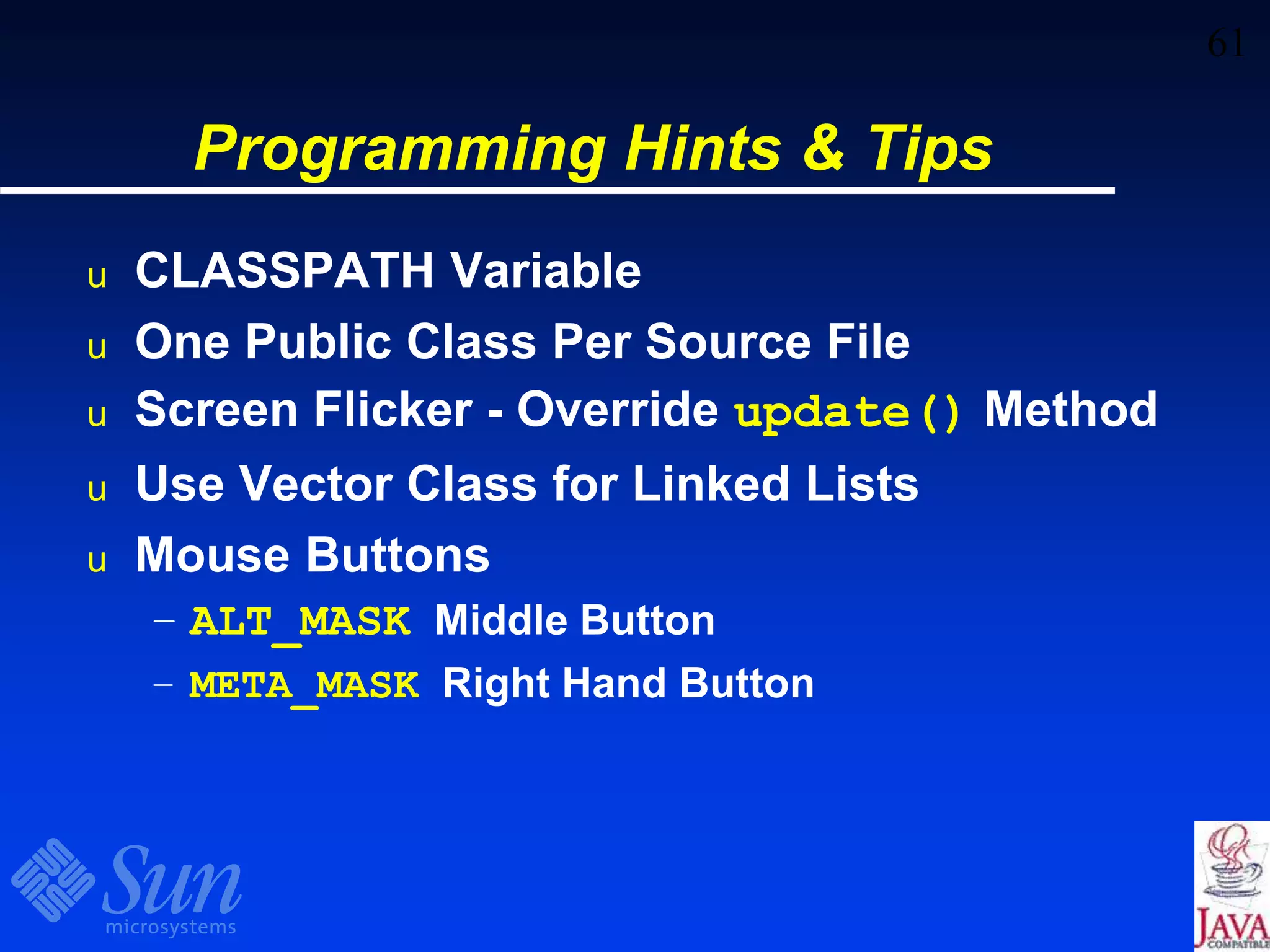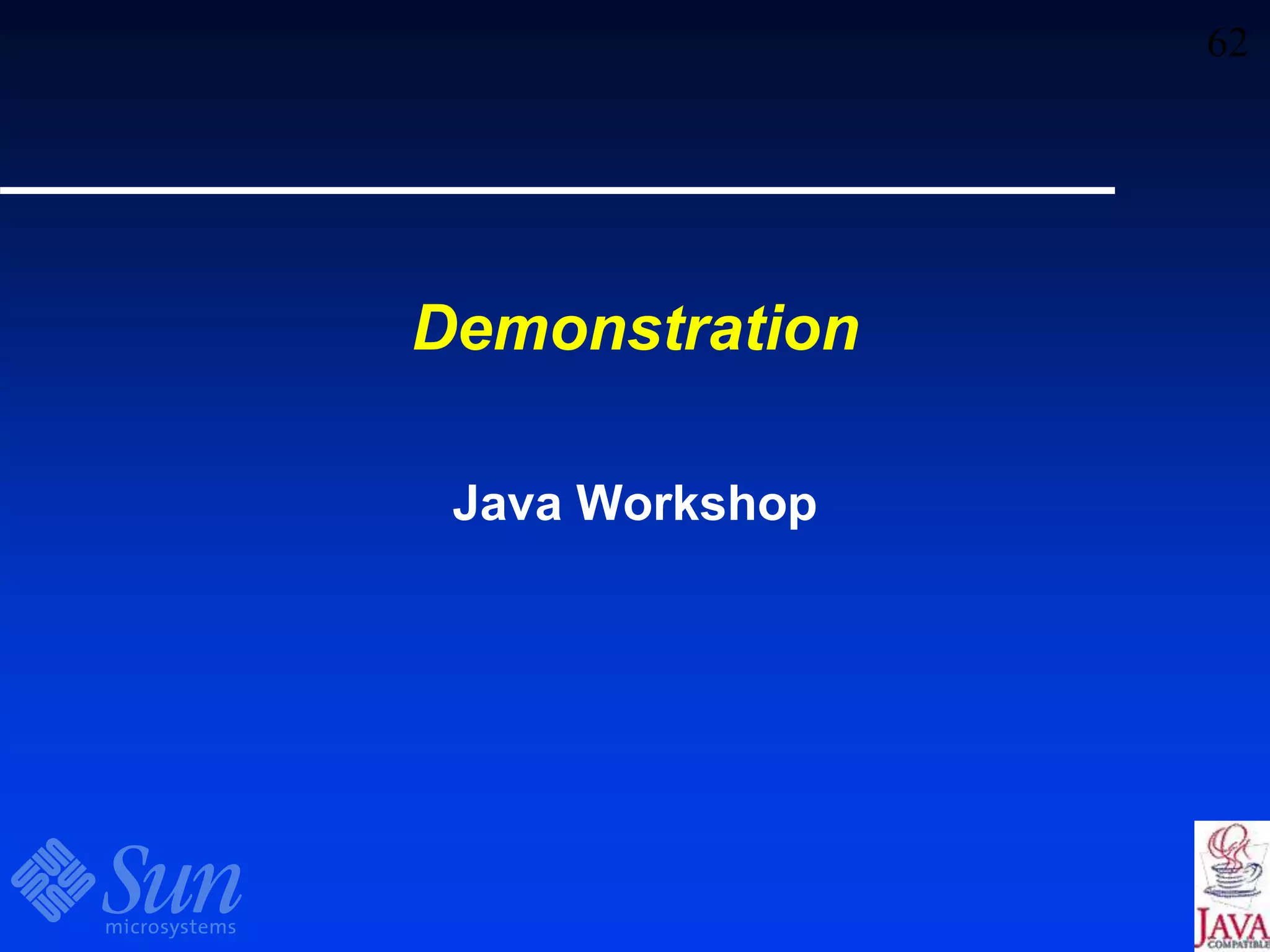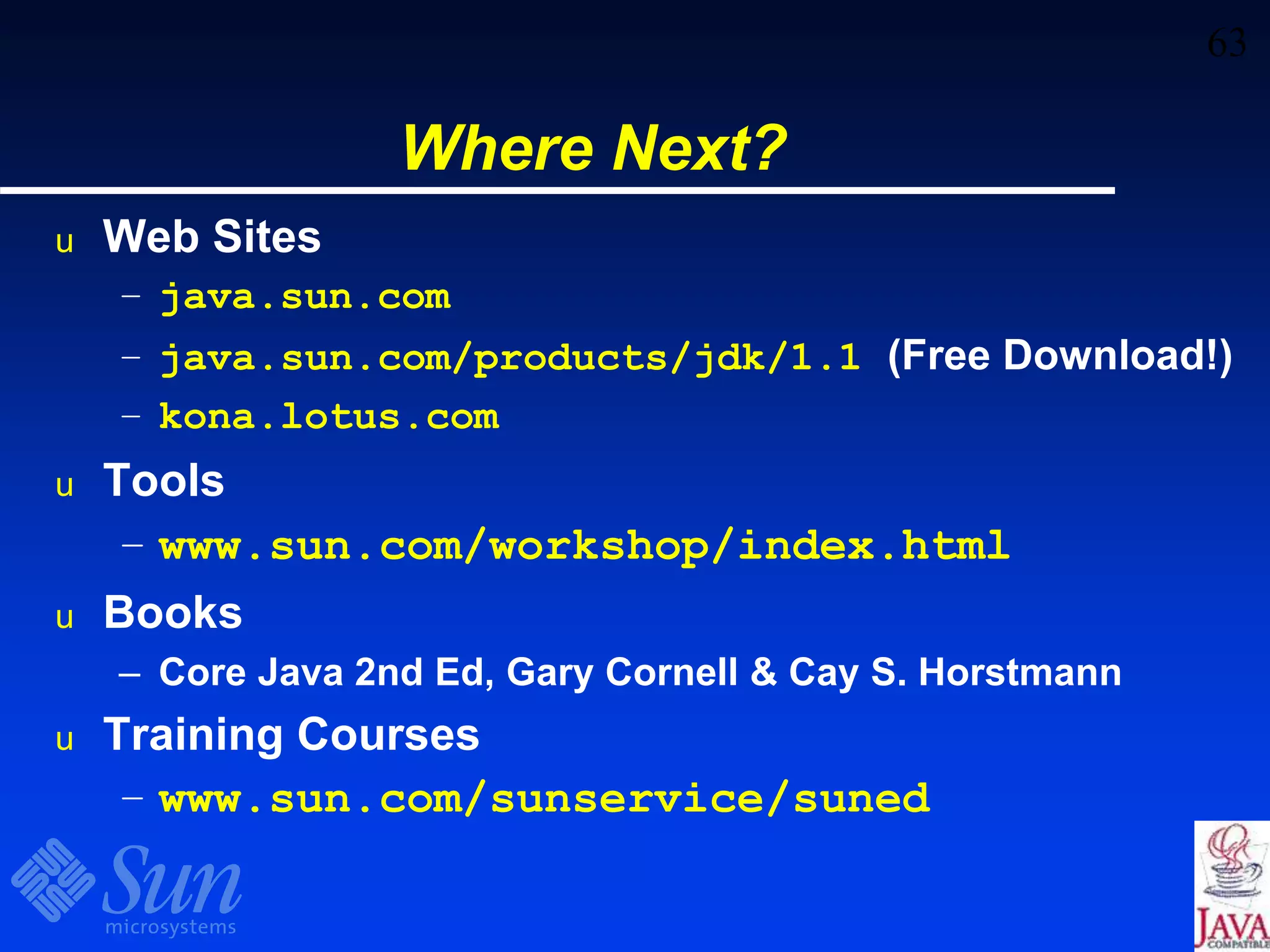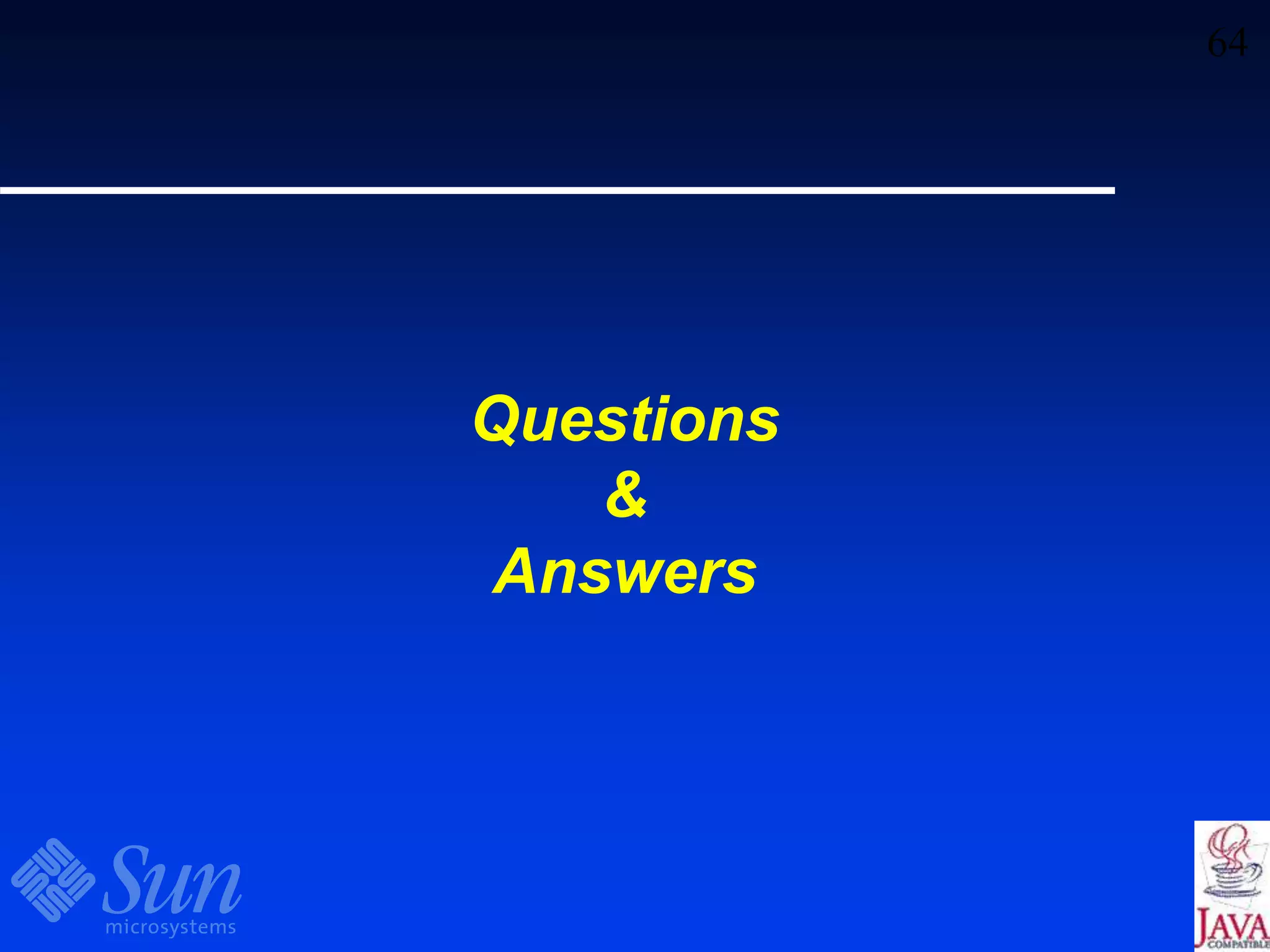This document provides an overview of Java programming concepts including:
- Java language syntax such as variables, data types, operators, and control structures
- Object-oriented programming concepts like classes, objects, inheritance, and polymorphism
- GUI programming basics using the Abstract Window Toolkit (AWT) including components, layout managers, events, and menus
- Key classes and interfaces like Object, Class, and interfaces

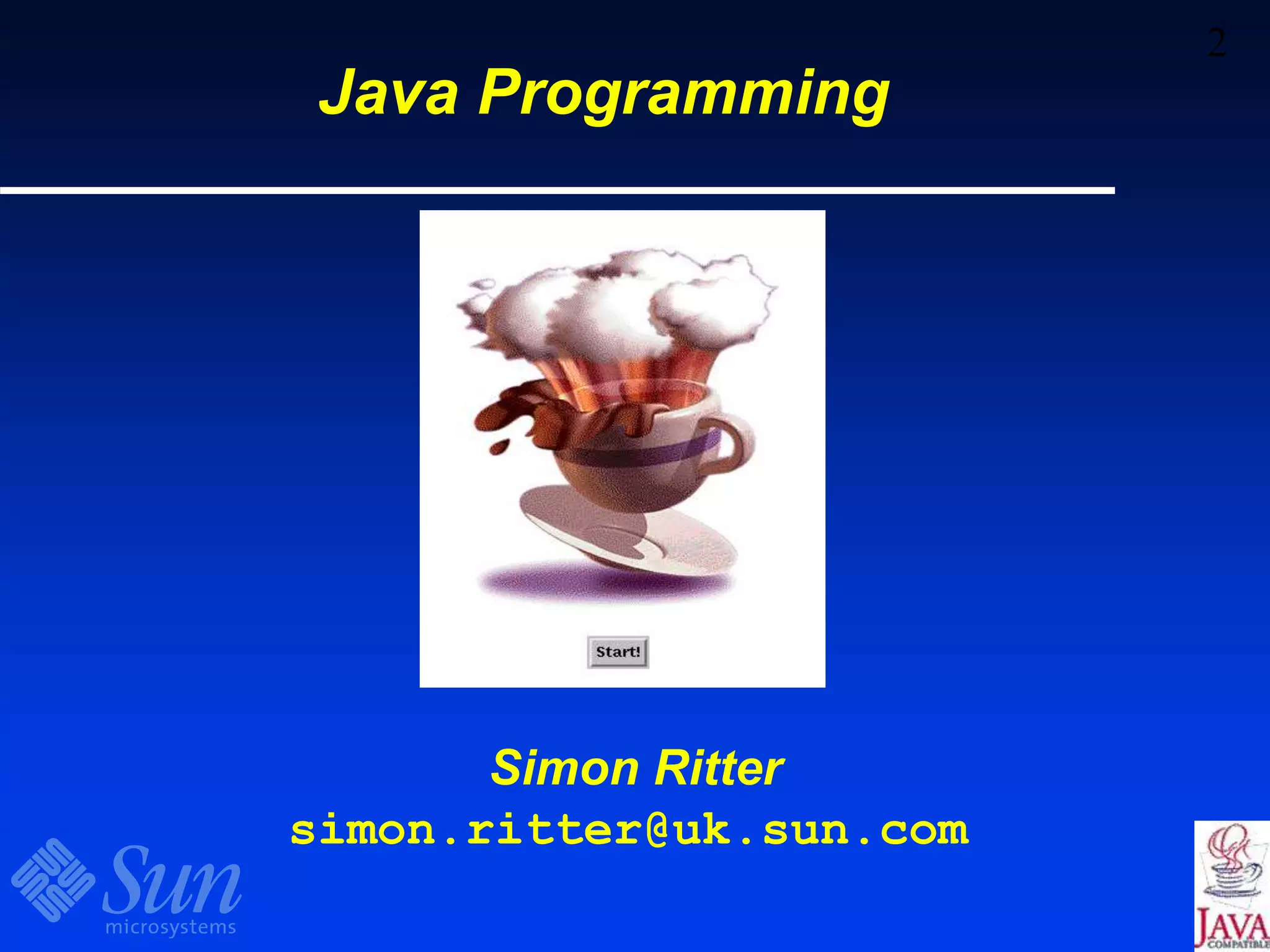
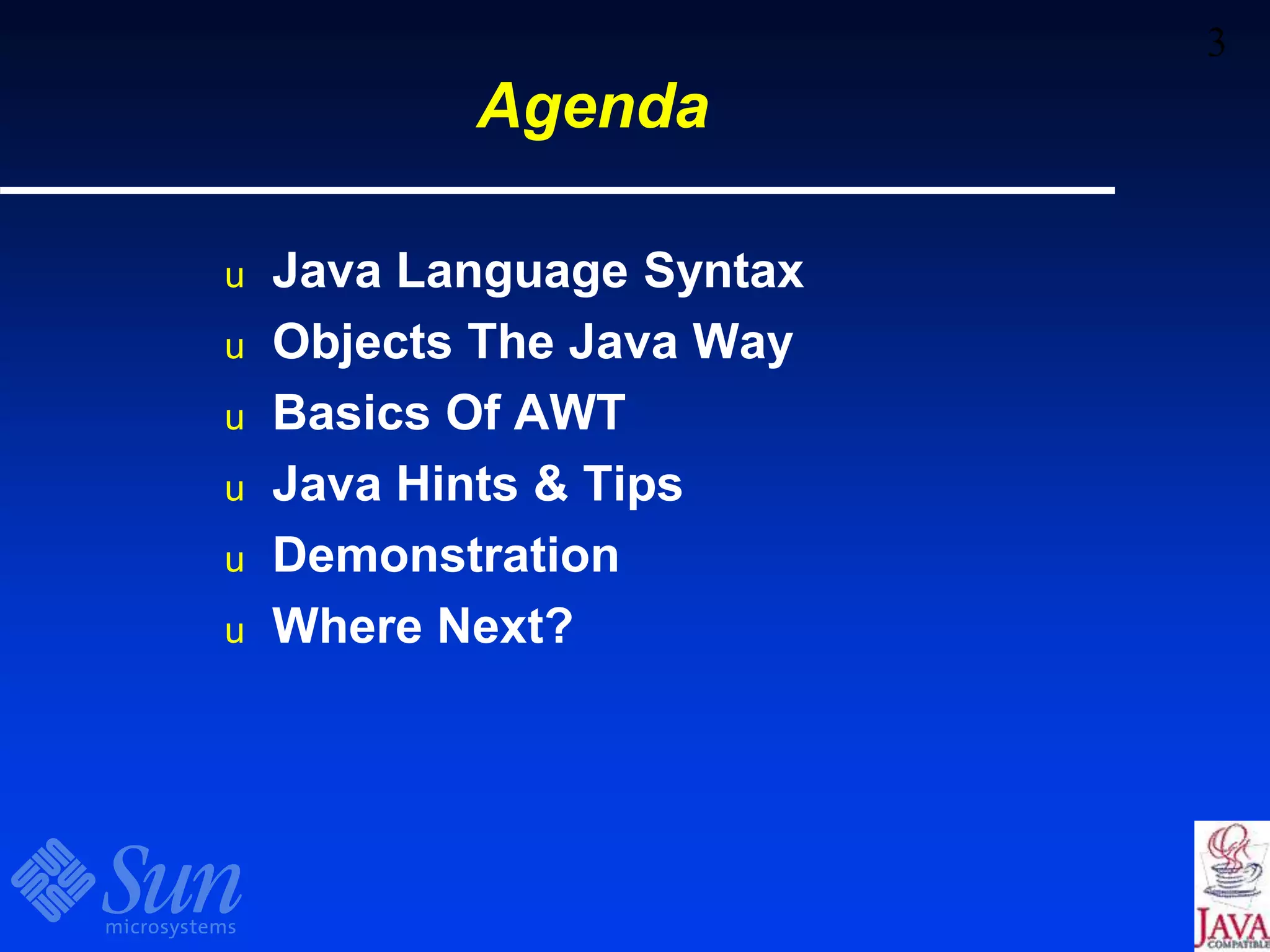
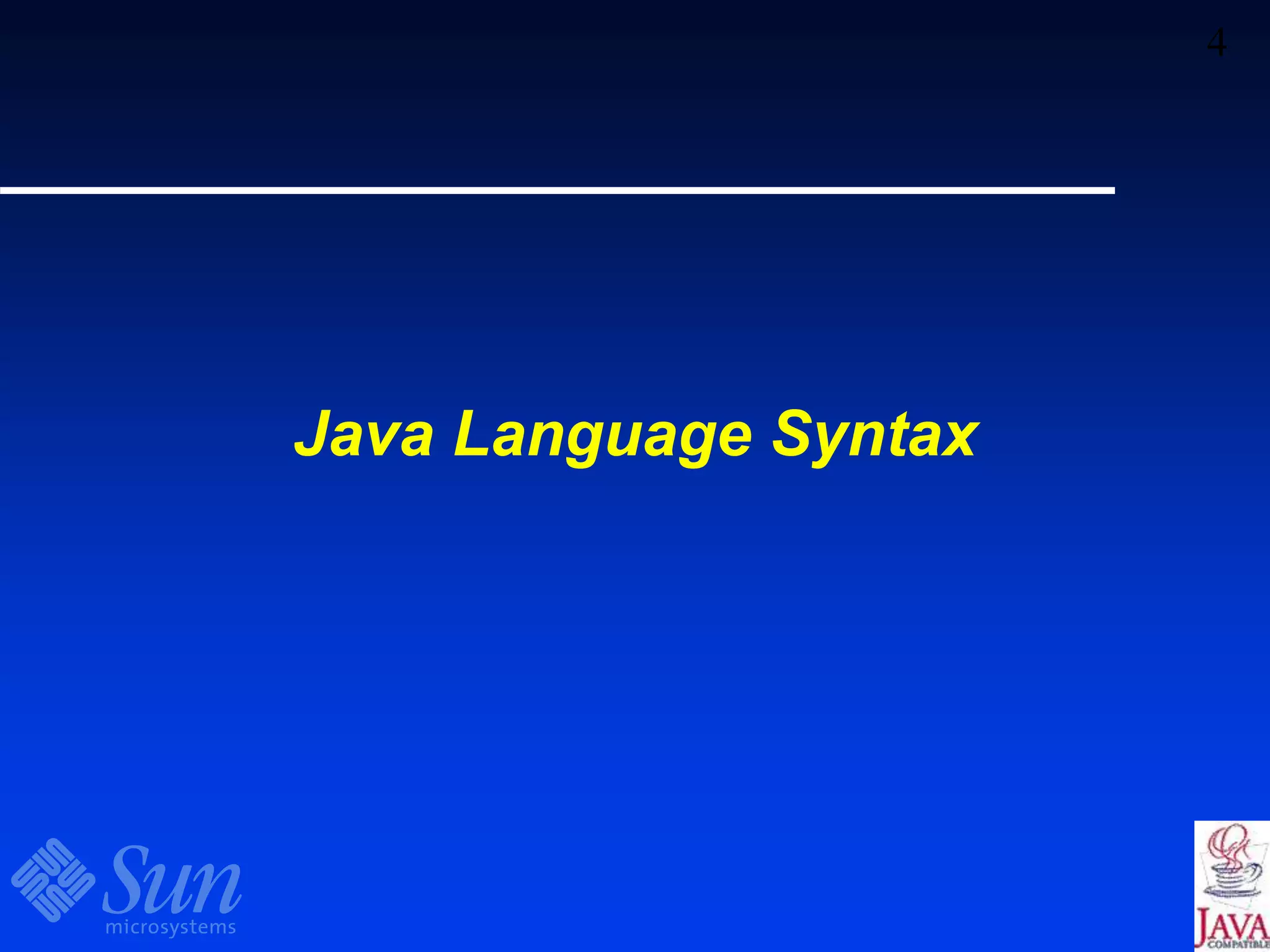
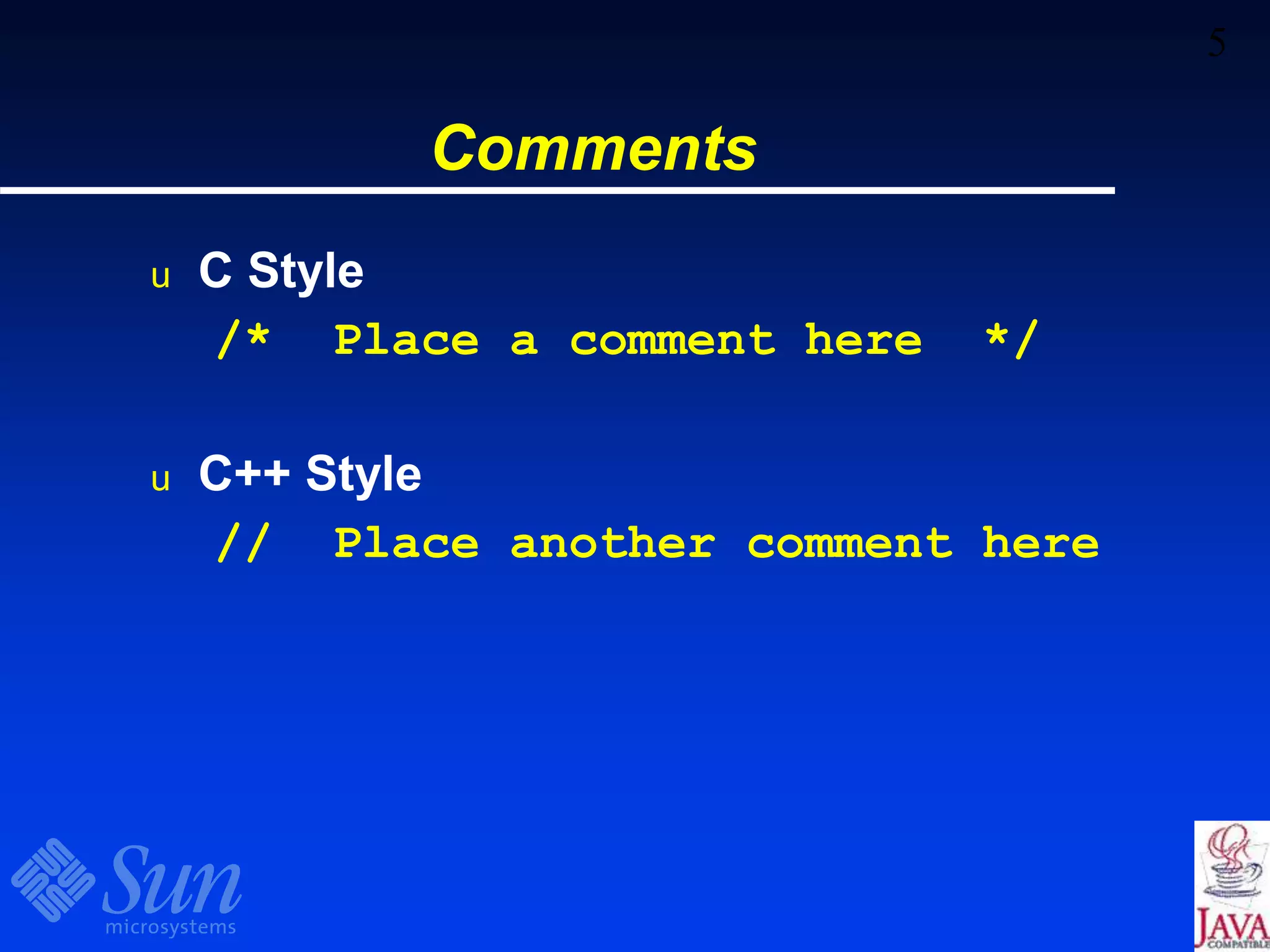
![6
Auto-Documenting Comments
u javadoc utility part of JDK
/** Documentation comment */
– @see [class]
– @see [class]#[method]
– @version [text]
– @author [name]
– @param [variable_name] [description]
– @return [description]
– @throws [class_name] [description]](https://image.slidesharecdn.com/lotus-bp-2-190520145156/75/Java-Programming-6-2048.jpg)
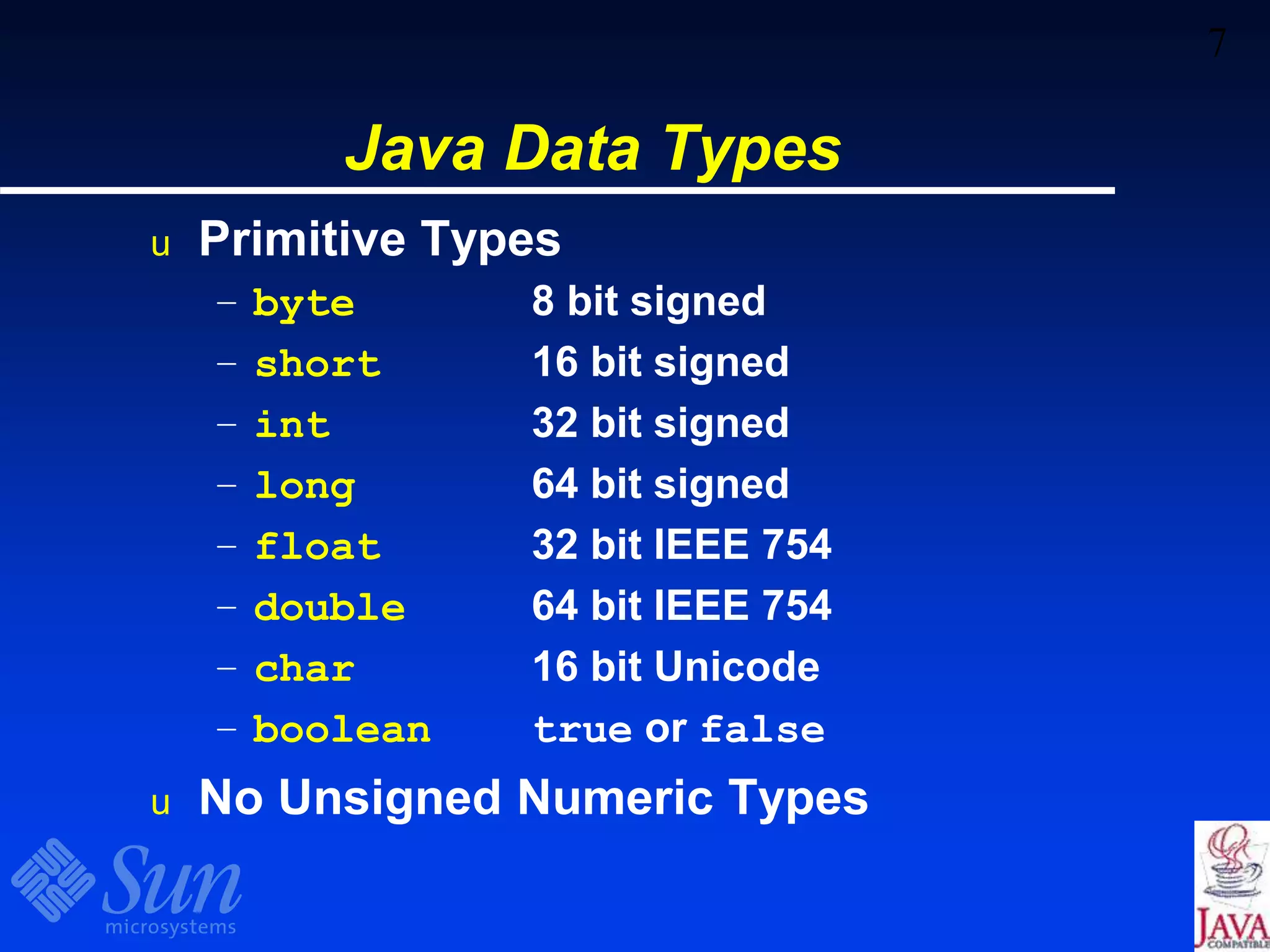

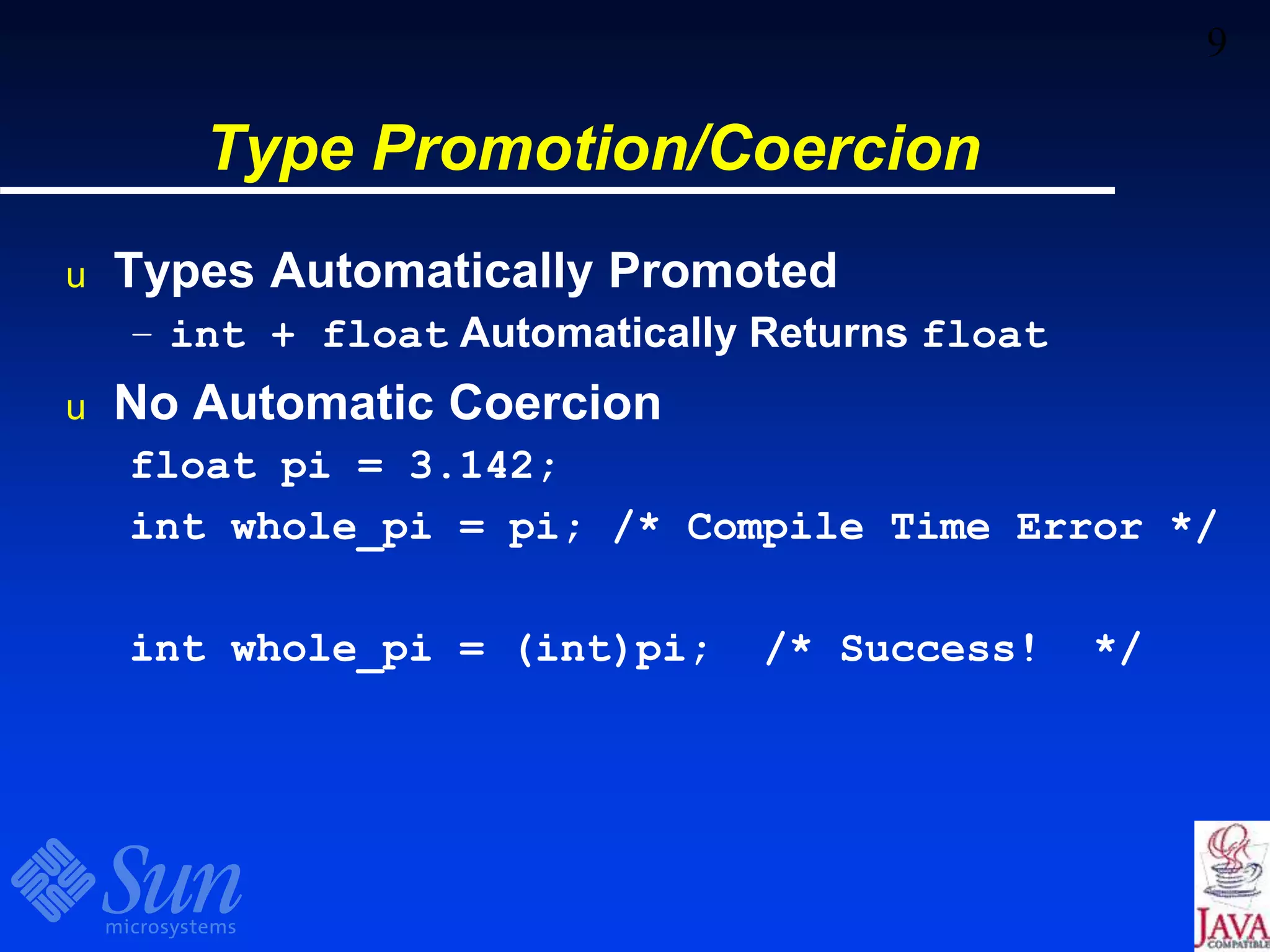
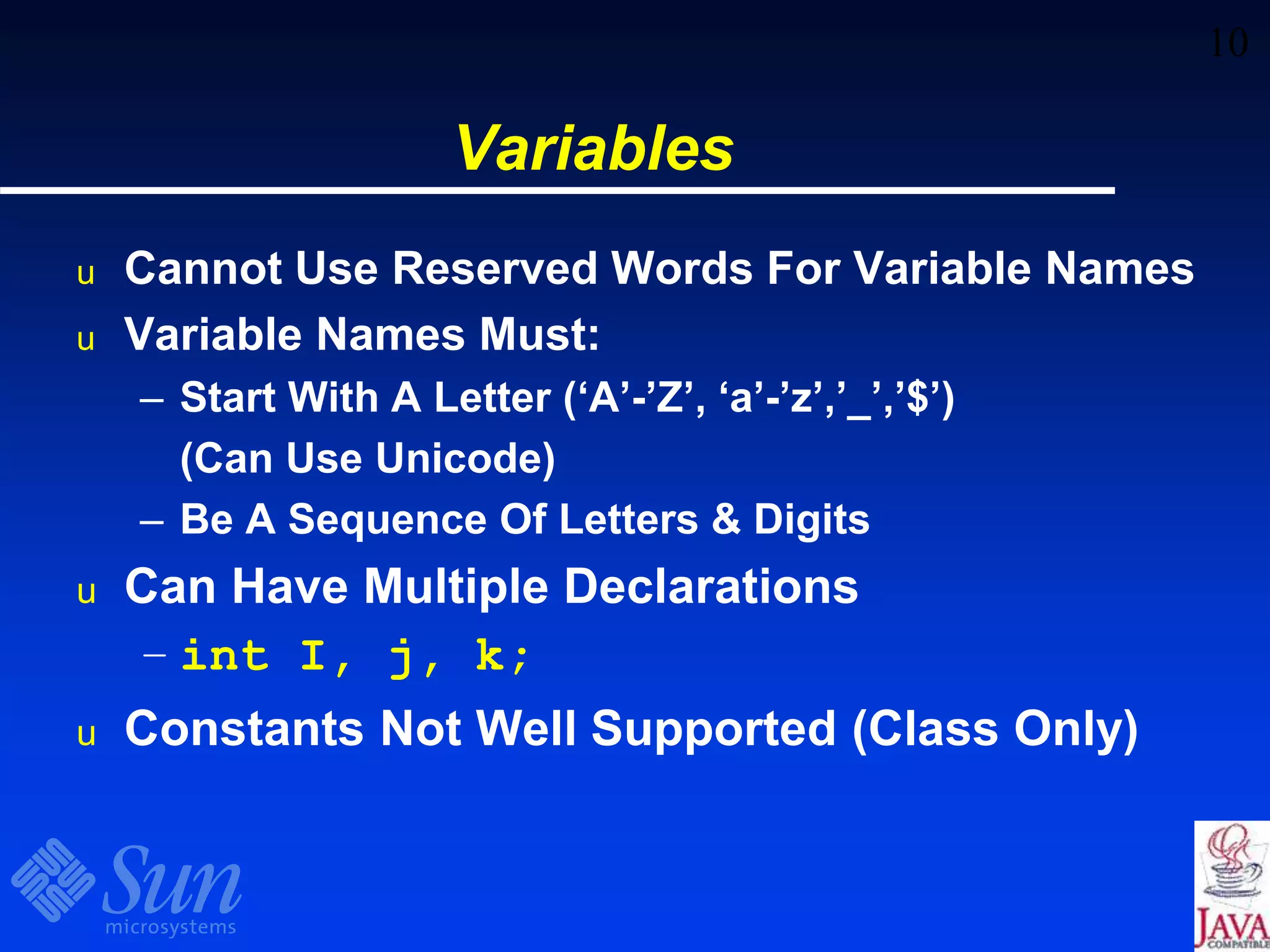
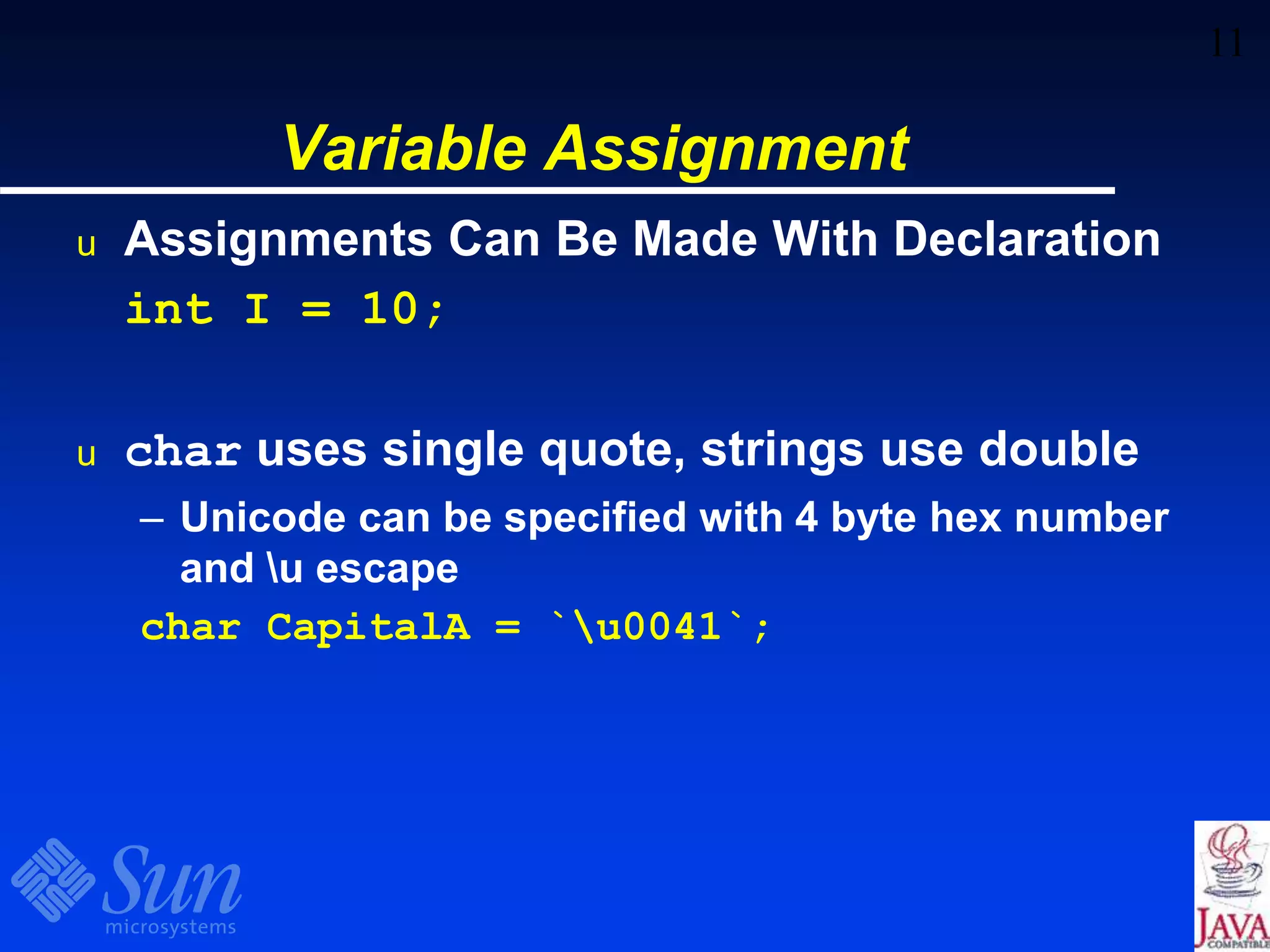
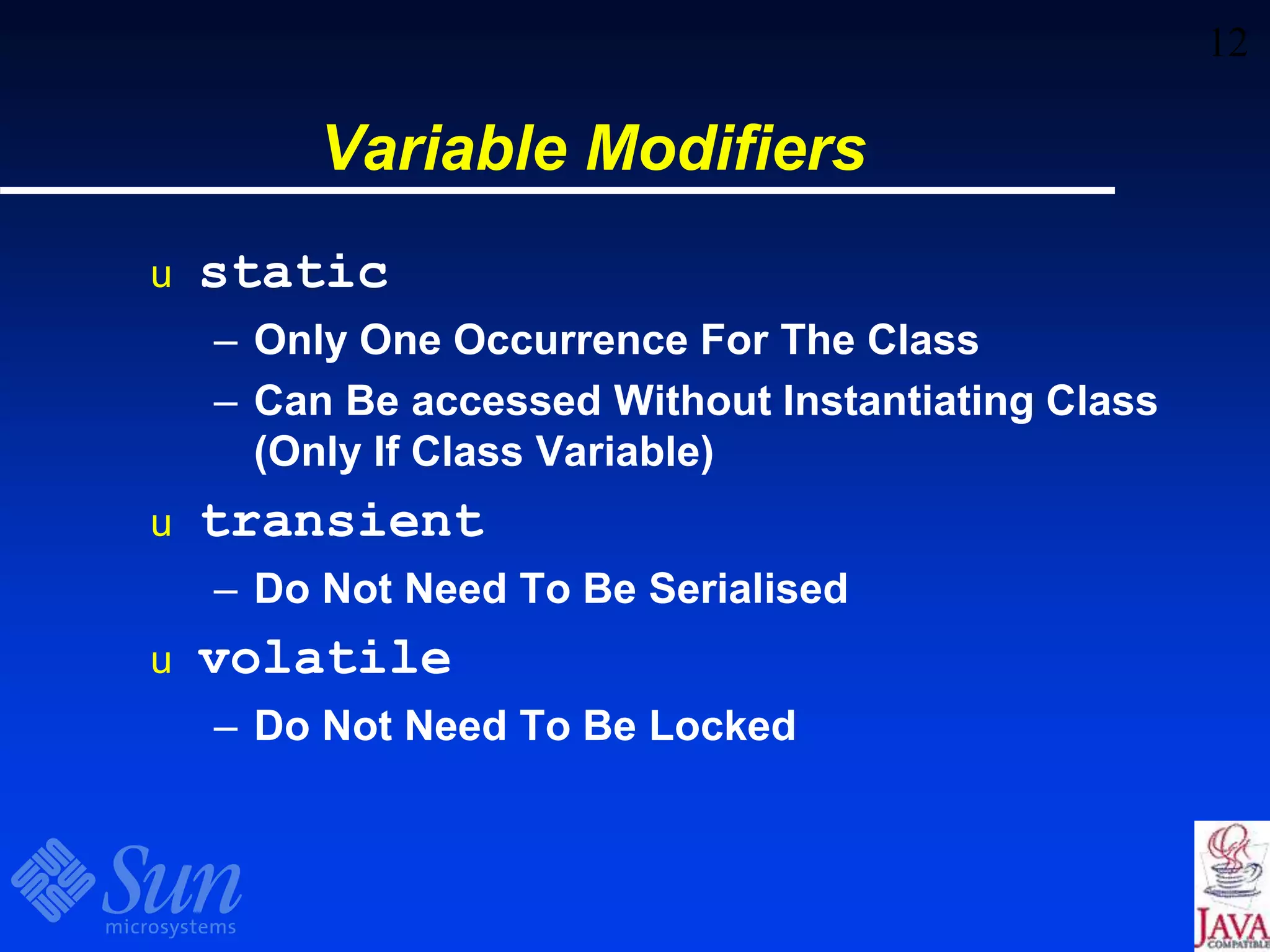
![13
Arrays
u Arrays Are References To Objects
u Subtely Different To ‘C’
int x[10];
x[1] = 42; /* Causes runtime nullPointer exception */
u Space Allocated With new
– int[] scores; /* Brackets either place */
– results = new int[10];
– short errors[] = new short[8];](https://image.slidesharecdn.com/lotus-bp-2-190520145156/75/Java-Programming-13-2048.jpg)
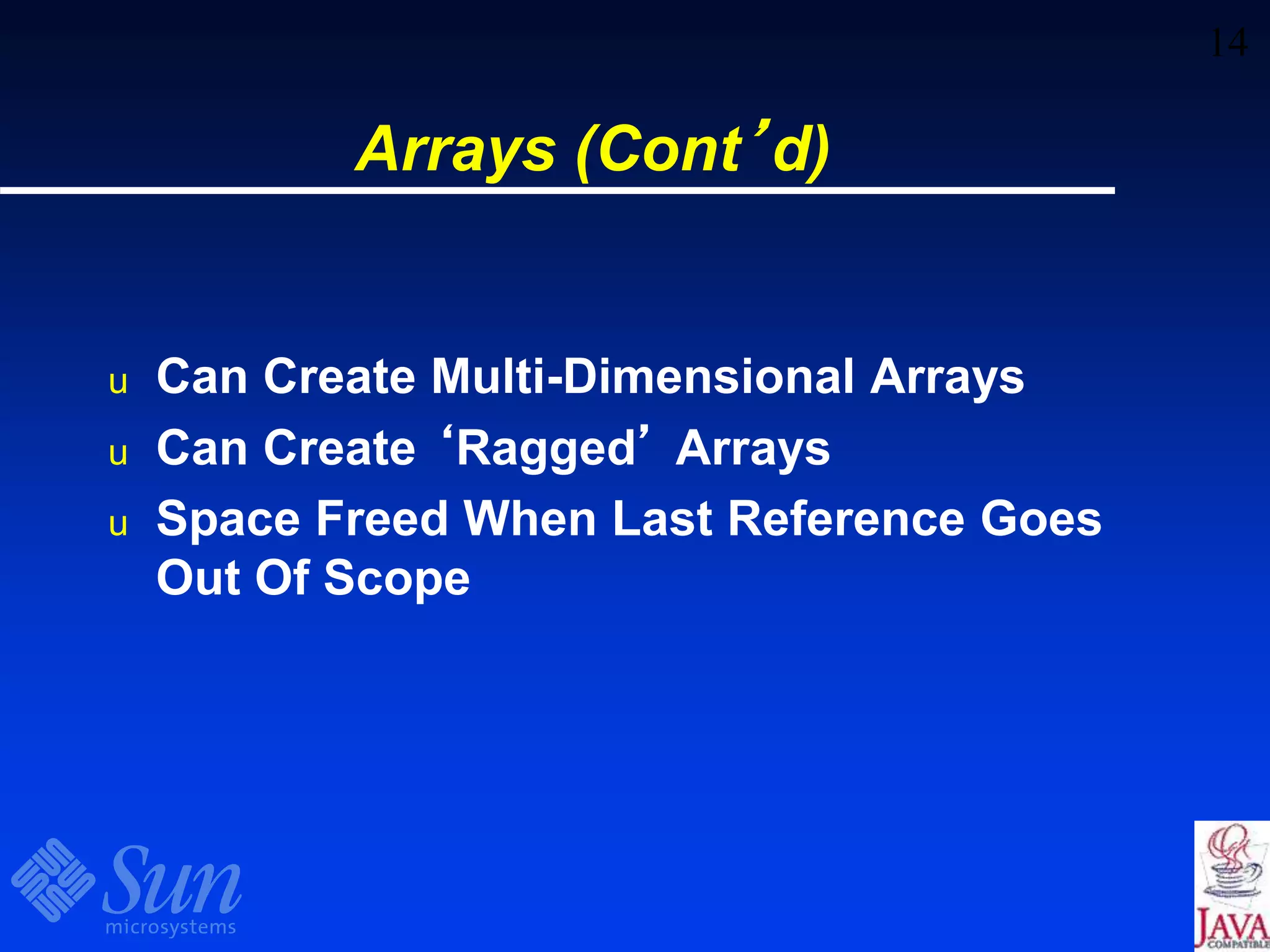
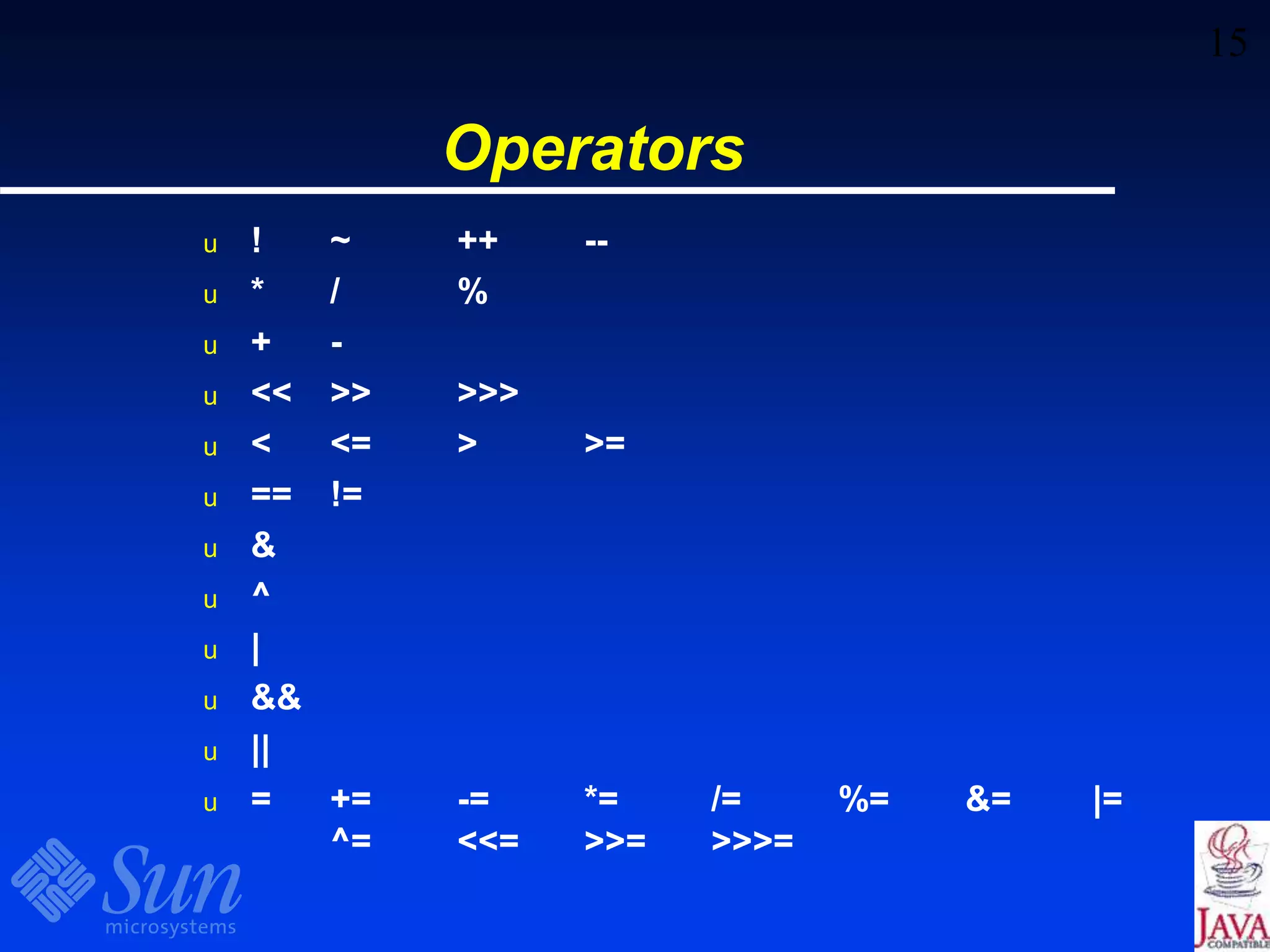
![16
Conditional Statements
u Syntax
if ( [test] ) { [action] } else { [action] }
u Example:
if (i == 10)
{
x = 4;
y = 6;
} else
j = 1;](https://image.slidesharecdn.com/lotus-bp-2-190520145156/75/Java-Programming-16-2048.jpg)
![17
Determinate Loops
u Syntax
for ( [start]; [end]; [update] )
{
[statement_block];
}
u Example
for (i = 0; i < 10; i++)
x[i] = i;](https://image.slidesharecdn.com/lotus-bp-2-190520145156/75/Java-Programming-17-2048.jpg)
![18
Indeterminate Loops
u Syntax 1:
while ( [condition] )
{
[statement_block]
}
u Syntax 2:
do {
[statement_block]
}
while ( [condition] );](https://image.slidesharecdn.com/lotus-bp-2-190520145156/75/Java-Programming-18-2048.jpg)
![19
Multiple Selections: Switch
u Syntax:
switch ( [variable] )
{
case [value]:
[statement_block];
break <label>;
default:
[statement_block];
}](https://image.slidesharecdn.com/lotus-bp-2-190520145156/75/Java-Programming-19-2048.jpg)
![20
Labeled Statement
u Label Must Preceed Statement To Jump To
u Label Must Be Followed By Colon (:)
u Use break And continue With Label
int i;
i:
for (i = start; i < max; i++)
{
int n = str.count, j = i, k = str.offset;
while (n-- != 0)
if (v[j++] != v2[k++])
continue i;](https://image.slidesharecdn.com/lotus-bp-2-190520145156/75/Java-Programming-20-2048.jpg)
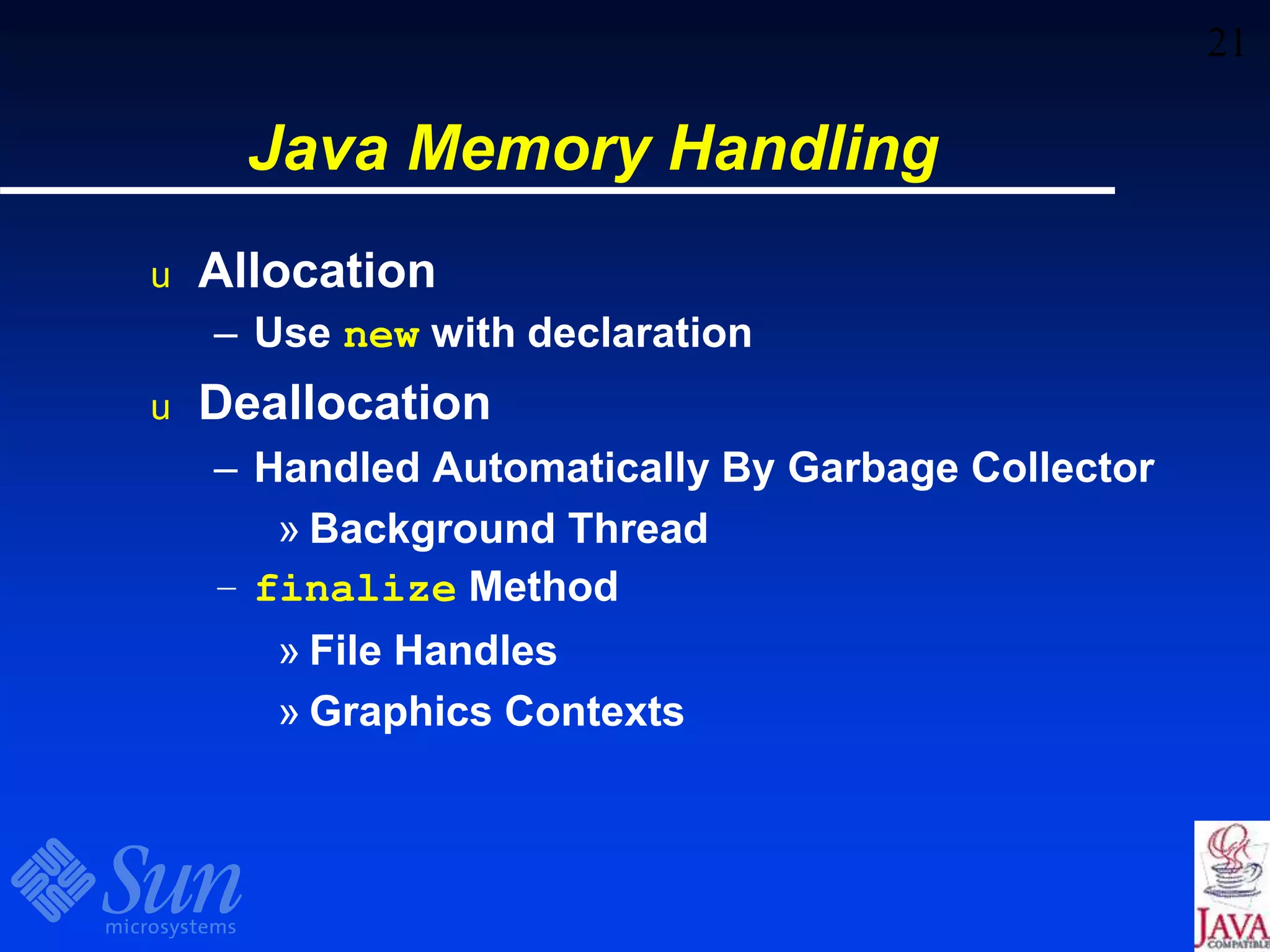
![22
Error Handling In Java
u Catching Exceptions
u Syntax:
try
{
[statement_block];
} catch ( [exception_type] )
{
[statement_block];
} finally
{
[statement_block];
}](https://image.slidesharecdn.com/lotus-bp-2-190520145156/75/Java-Programming-22-2048.jpg)
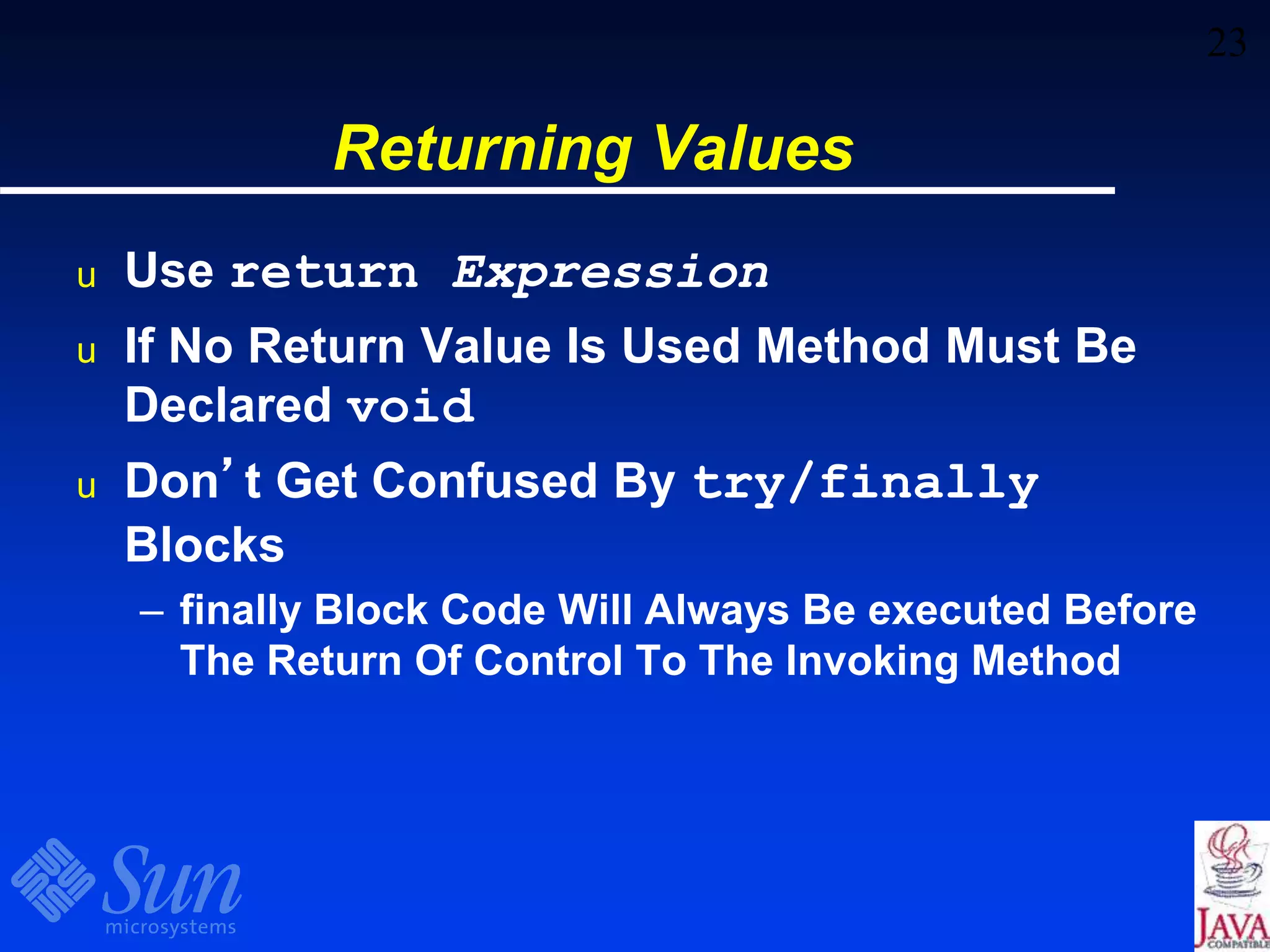
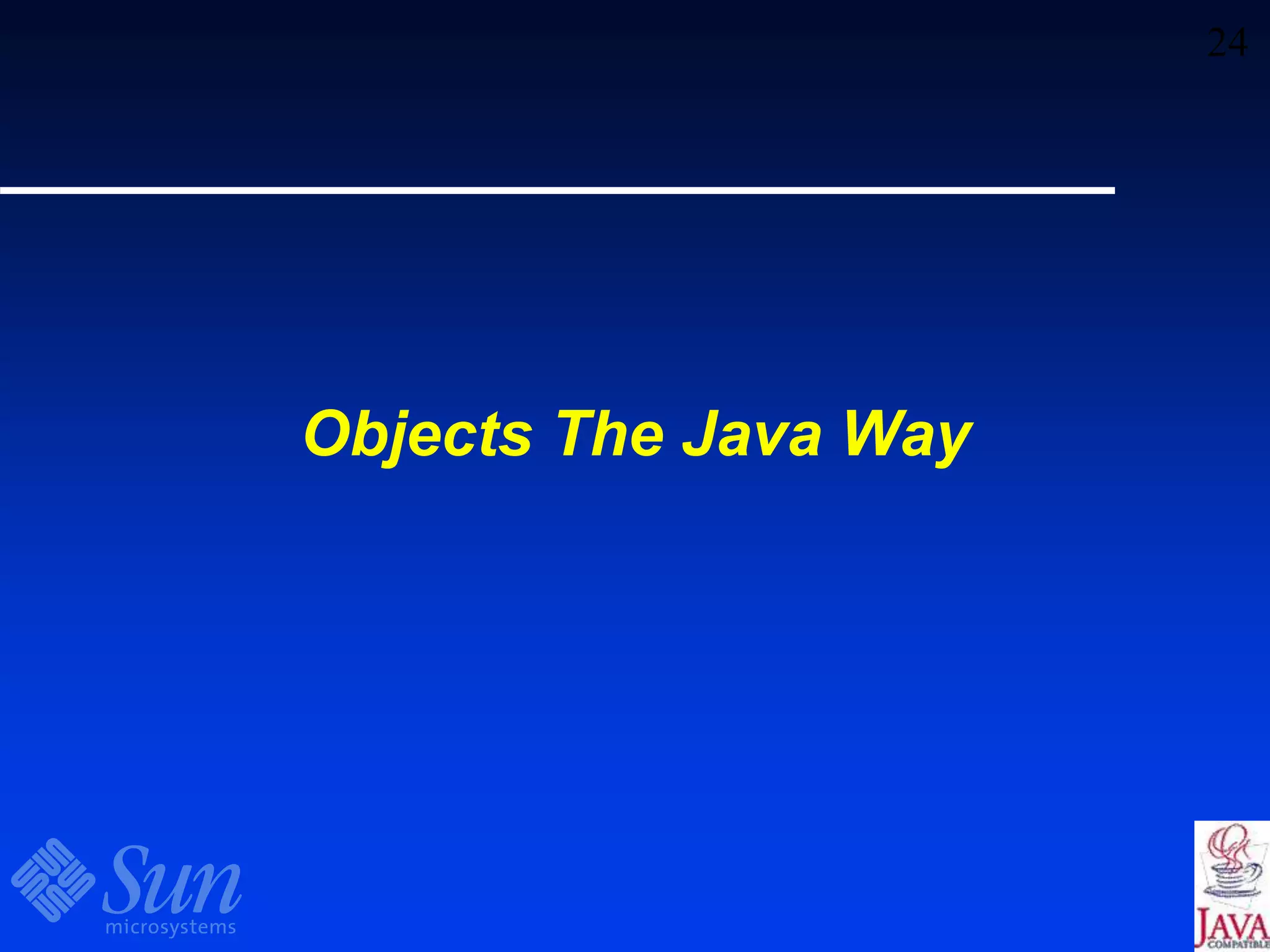
![25
Basic Java Objects
u Syntax:
class [name] extends [super]
{
[variables]
name() {} /* Constructor */
[methods]
}](https://image.slidesharecdn.com/lotus-bp-2-190520145156/75/Java-Programming-25-2048.jpg)
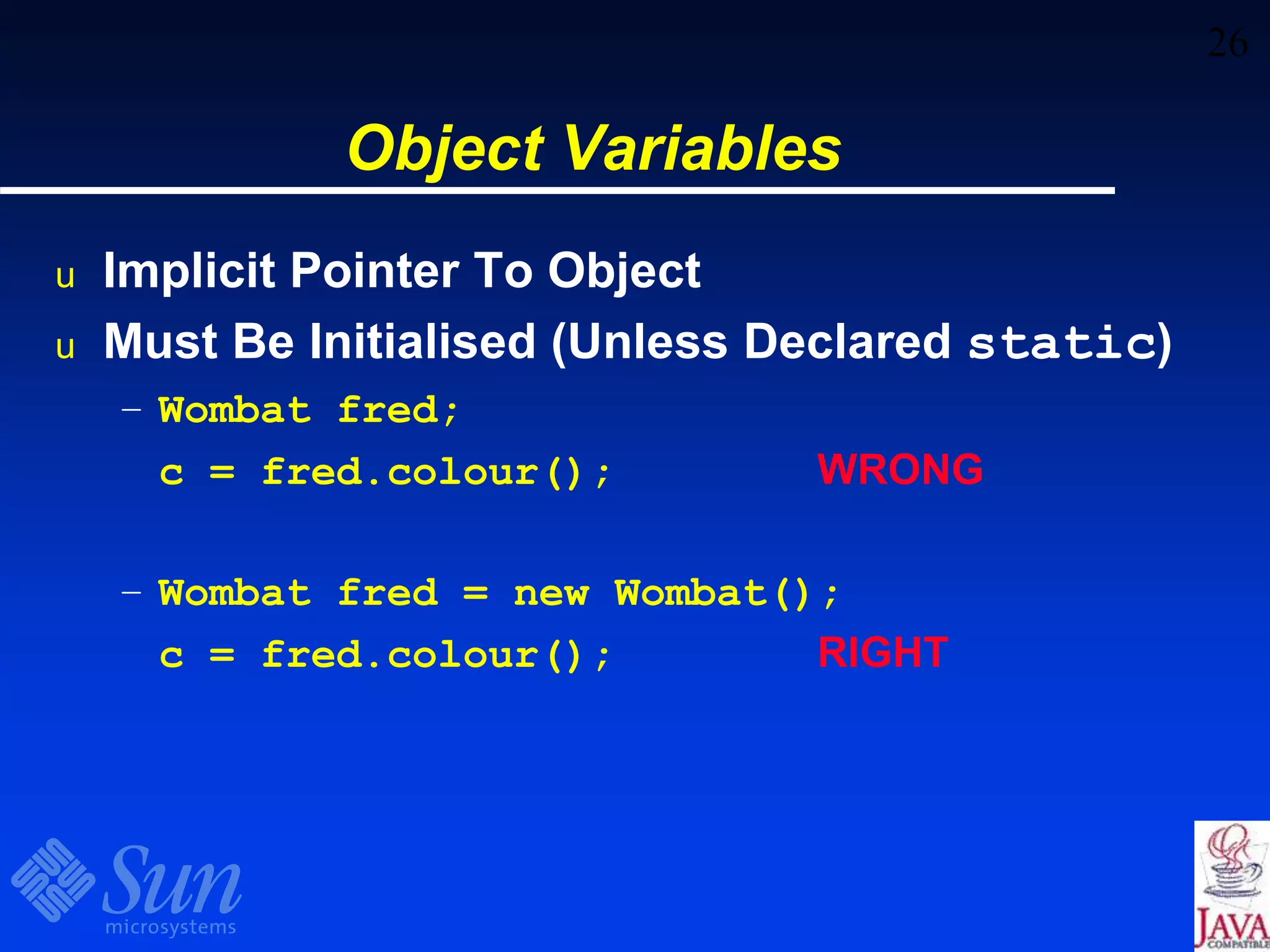
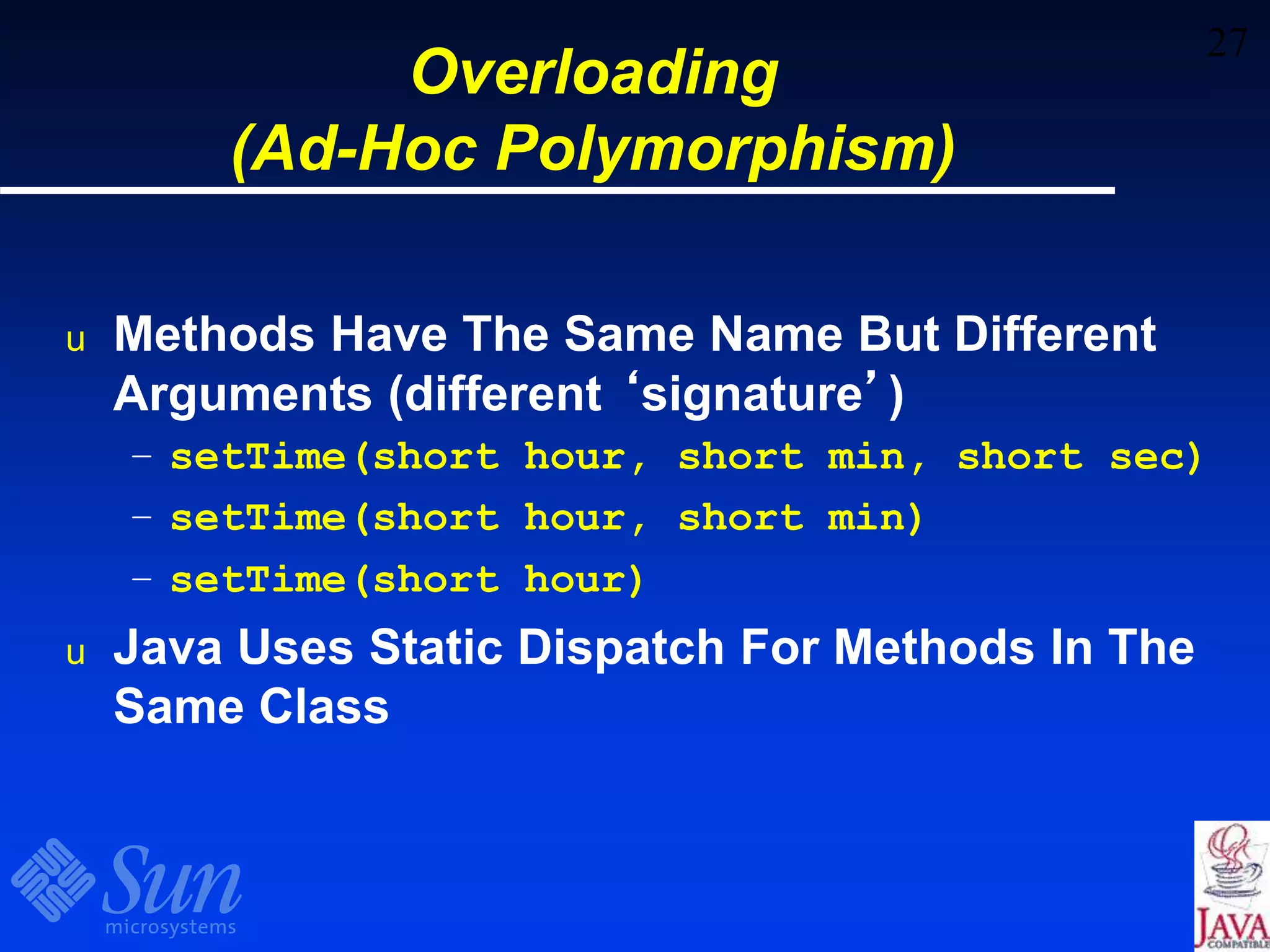
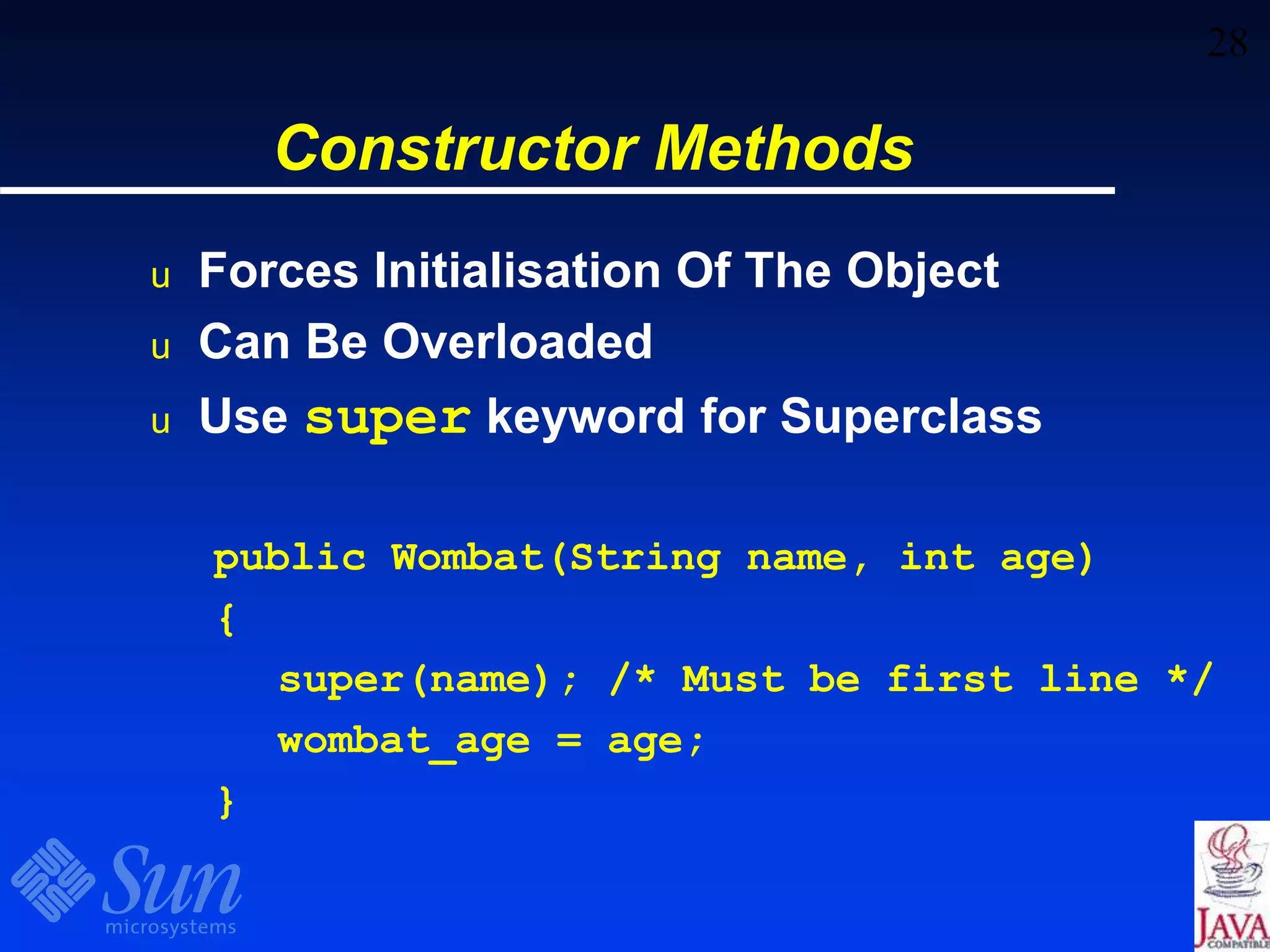
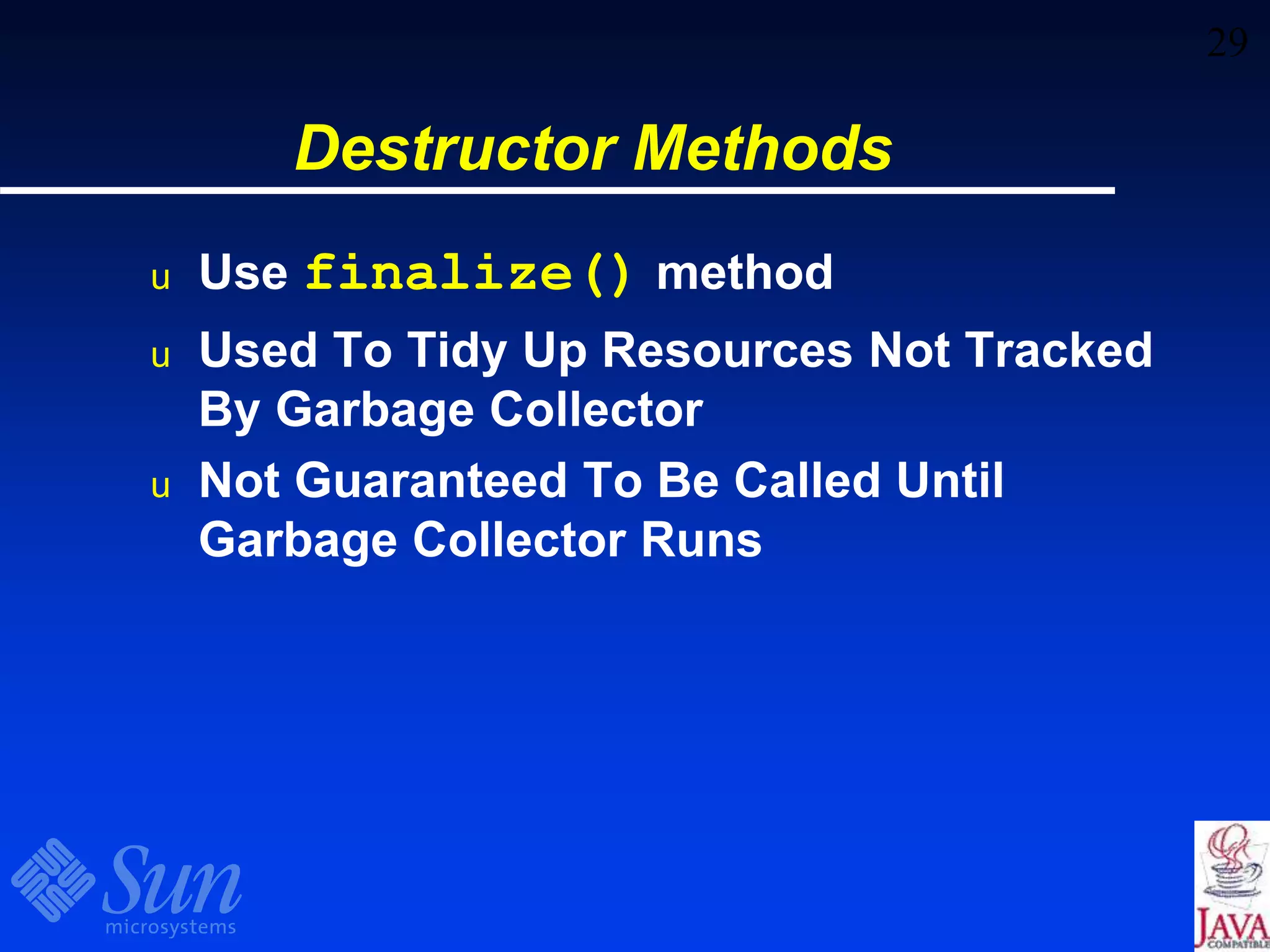
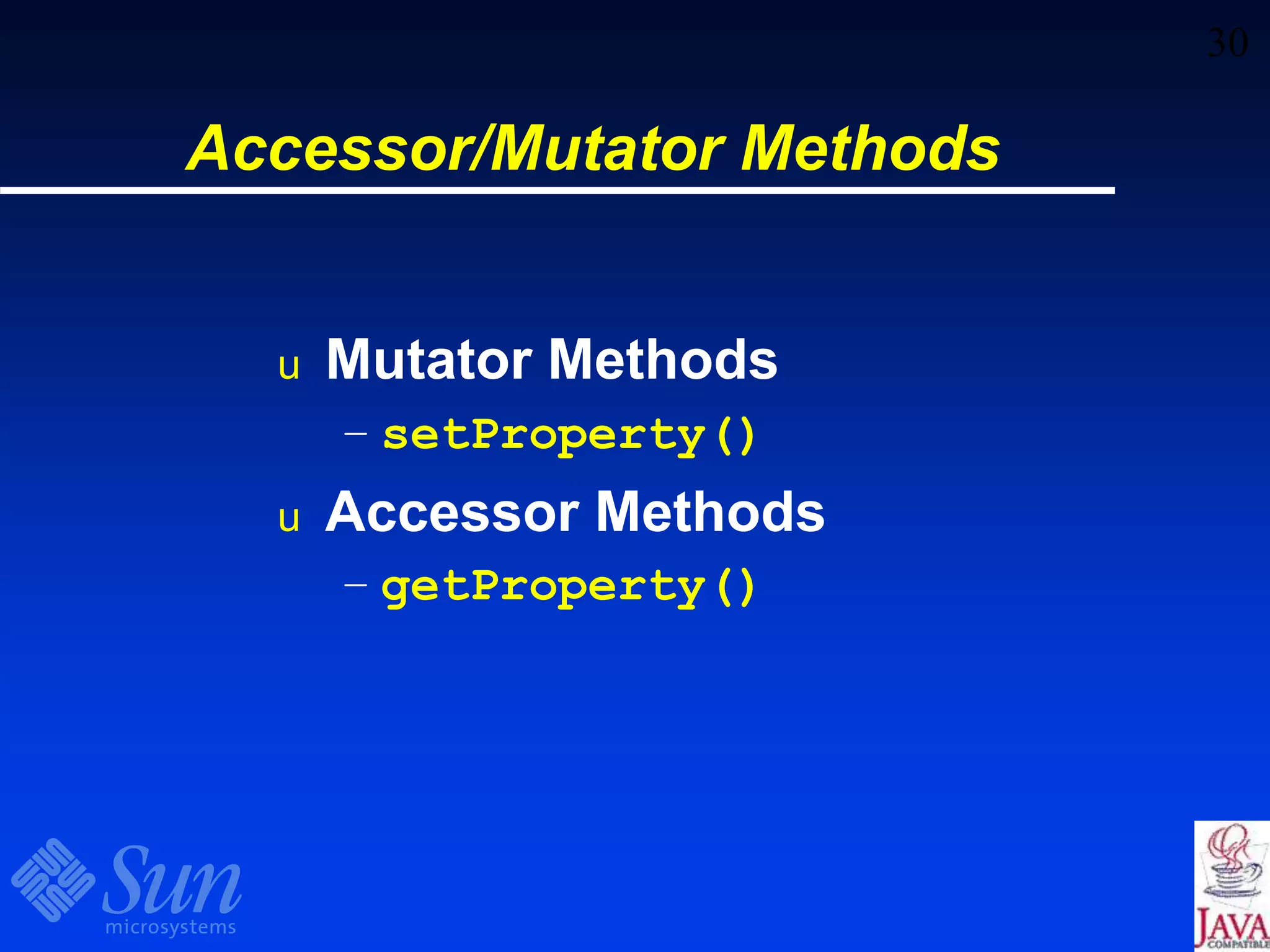
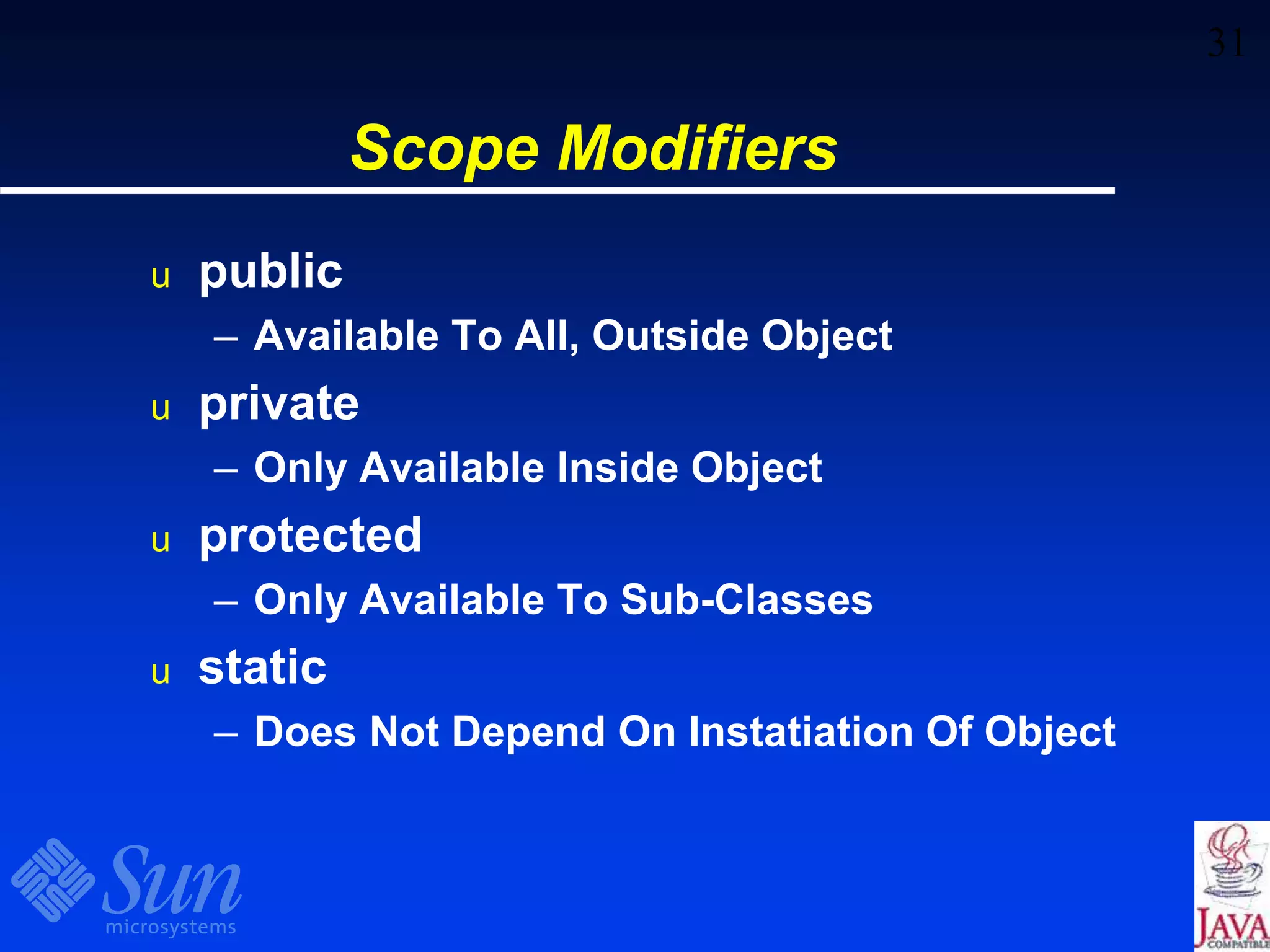
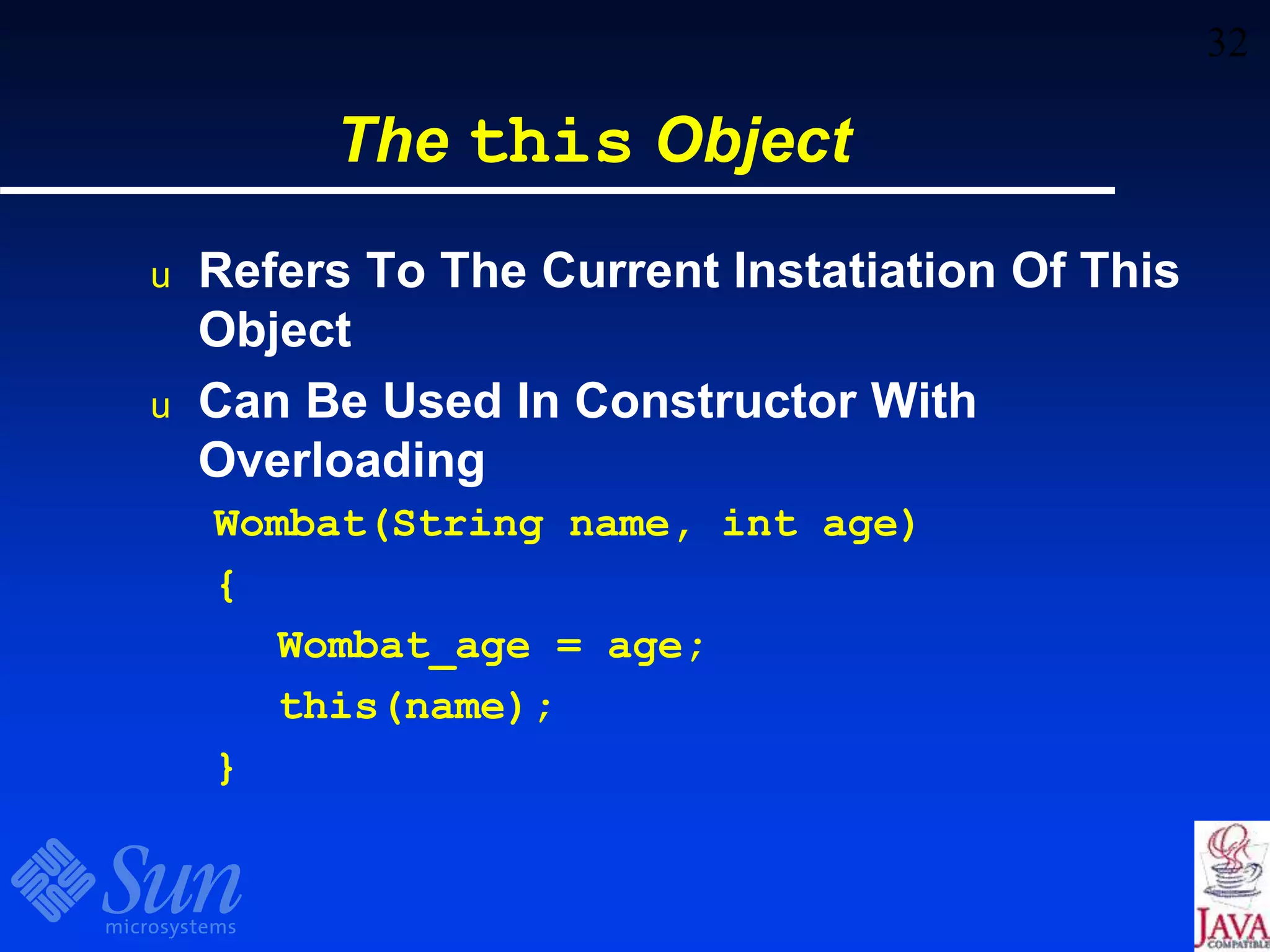
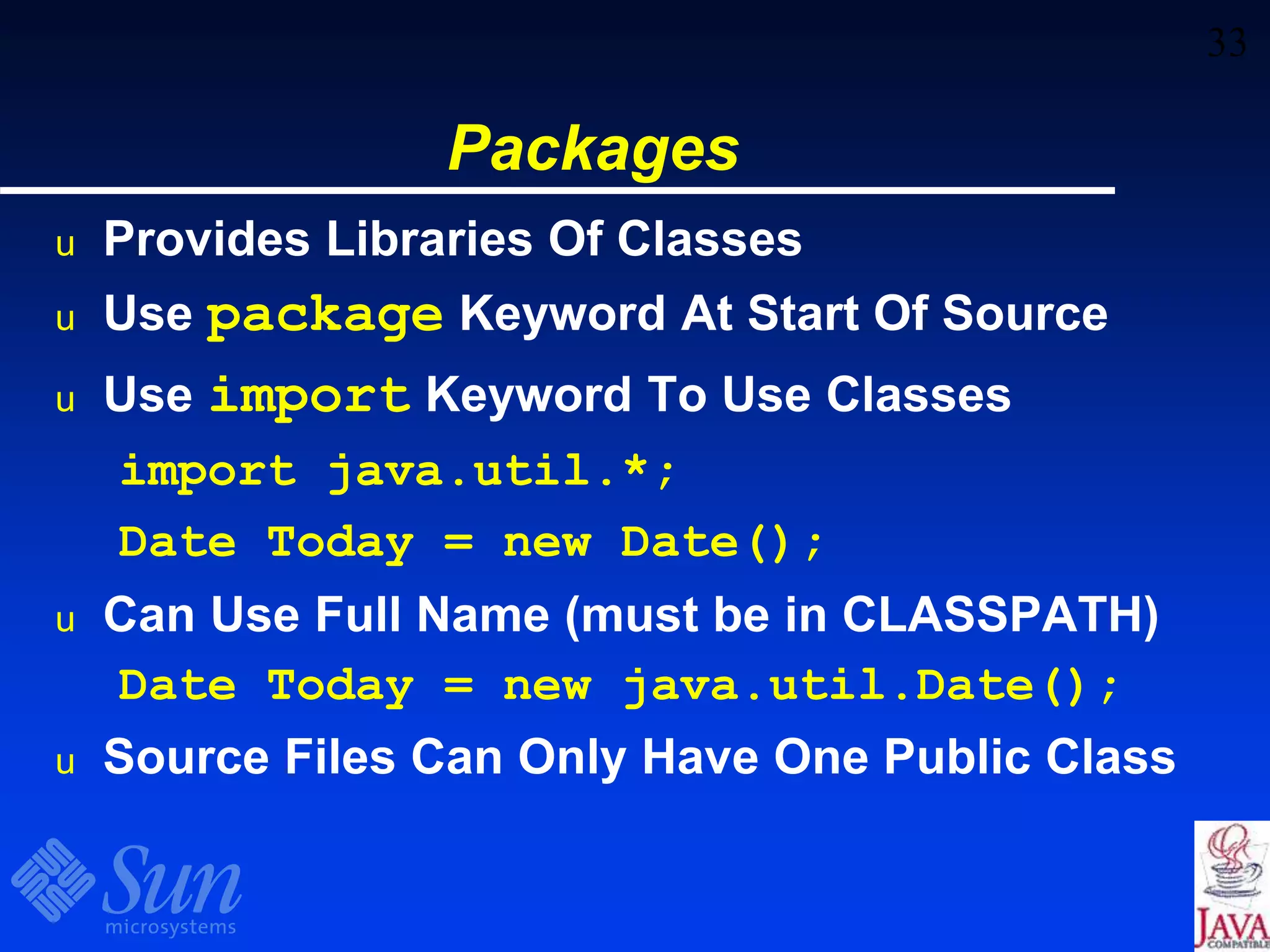

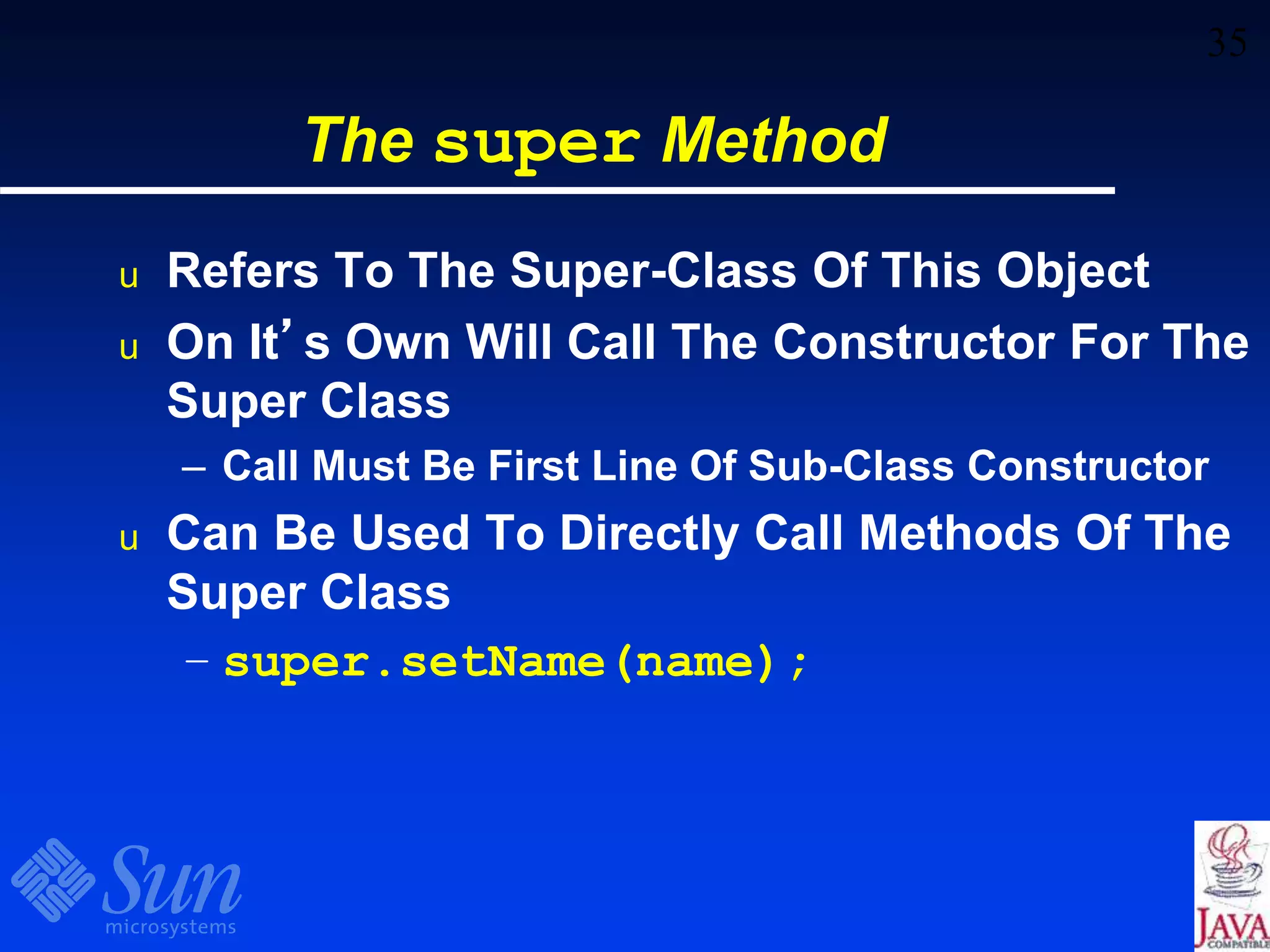
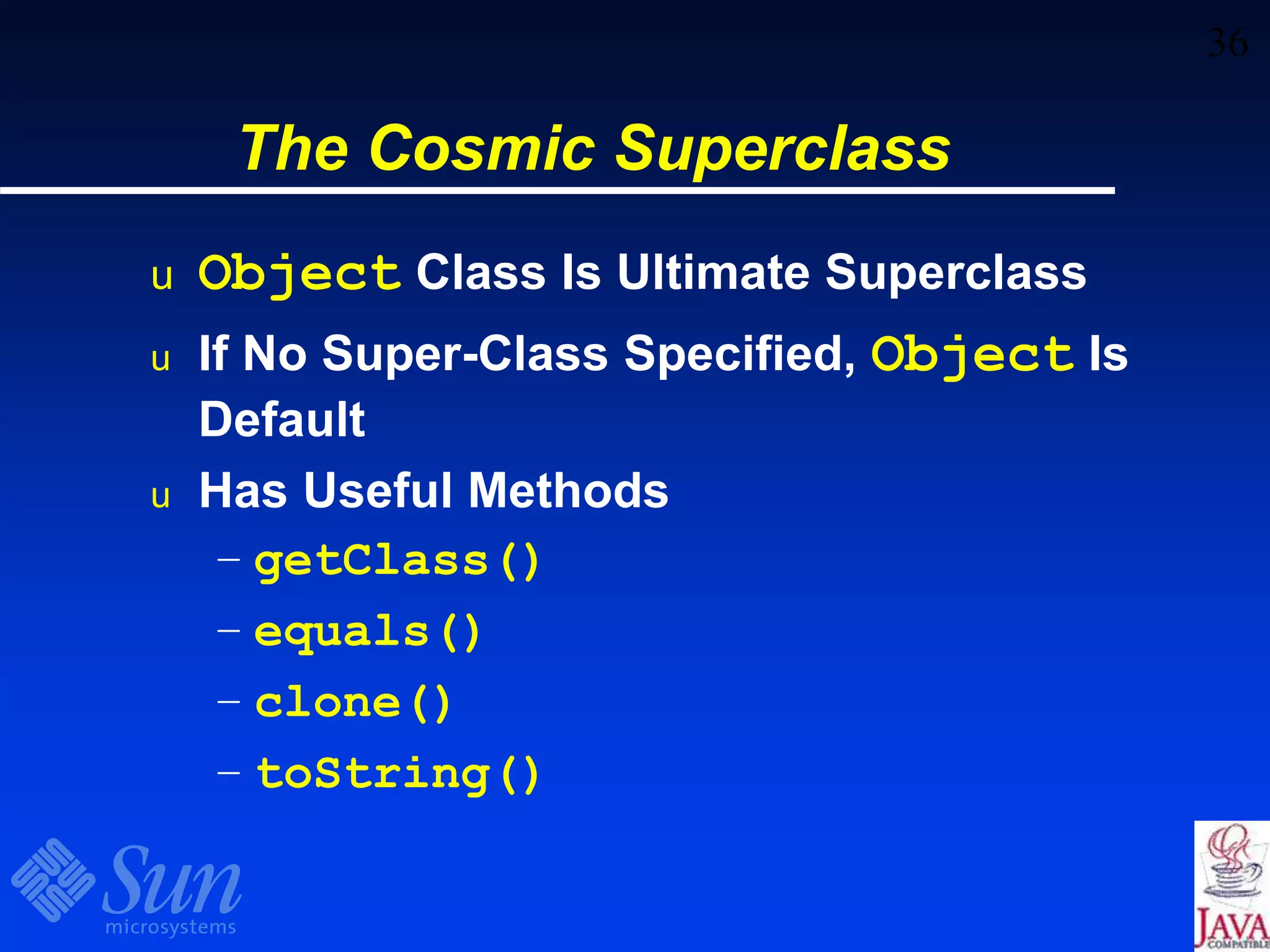
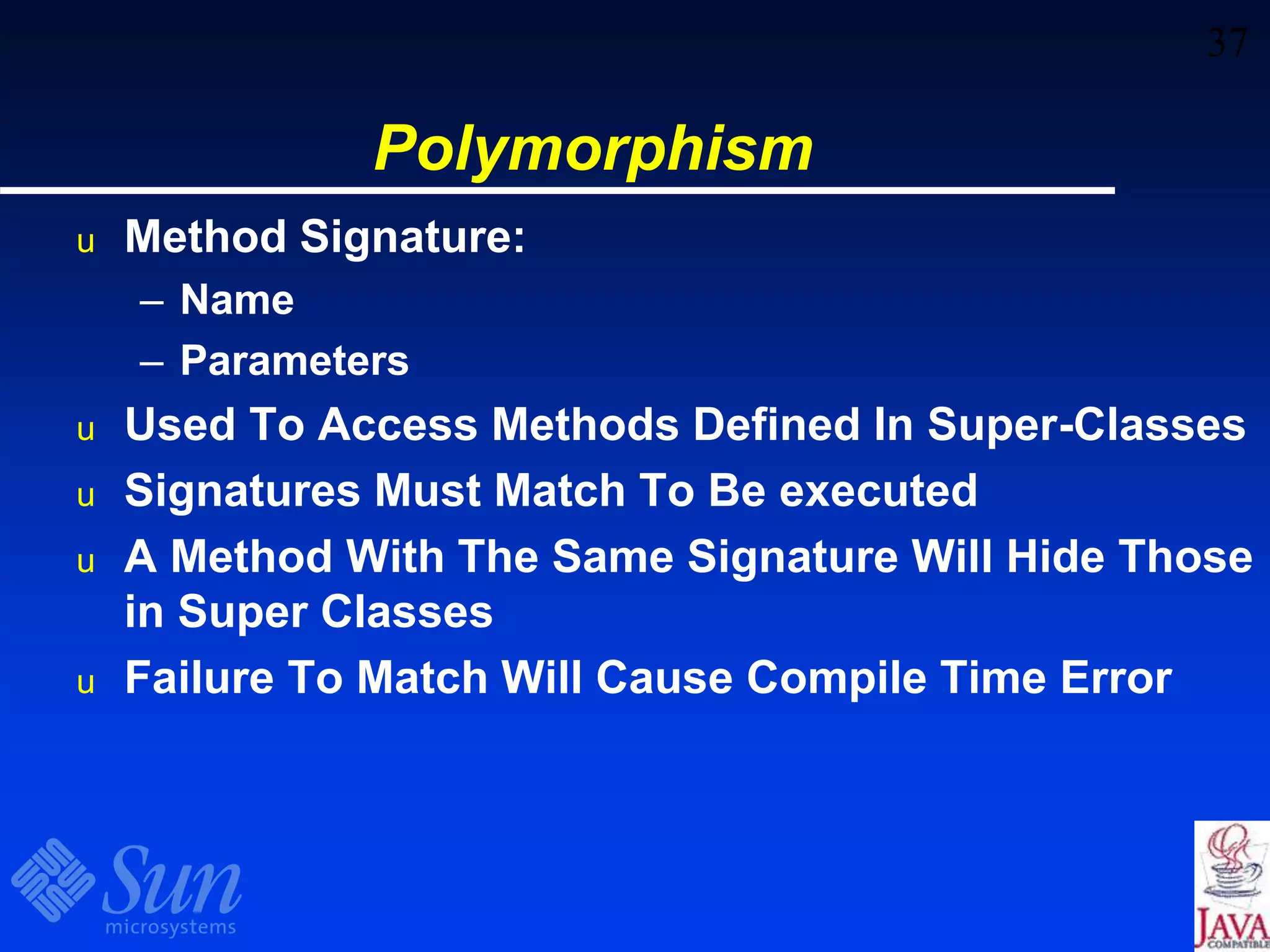
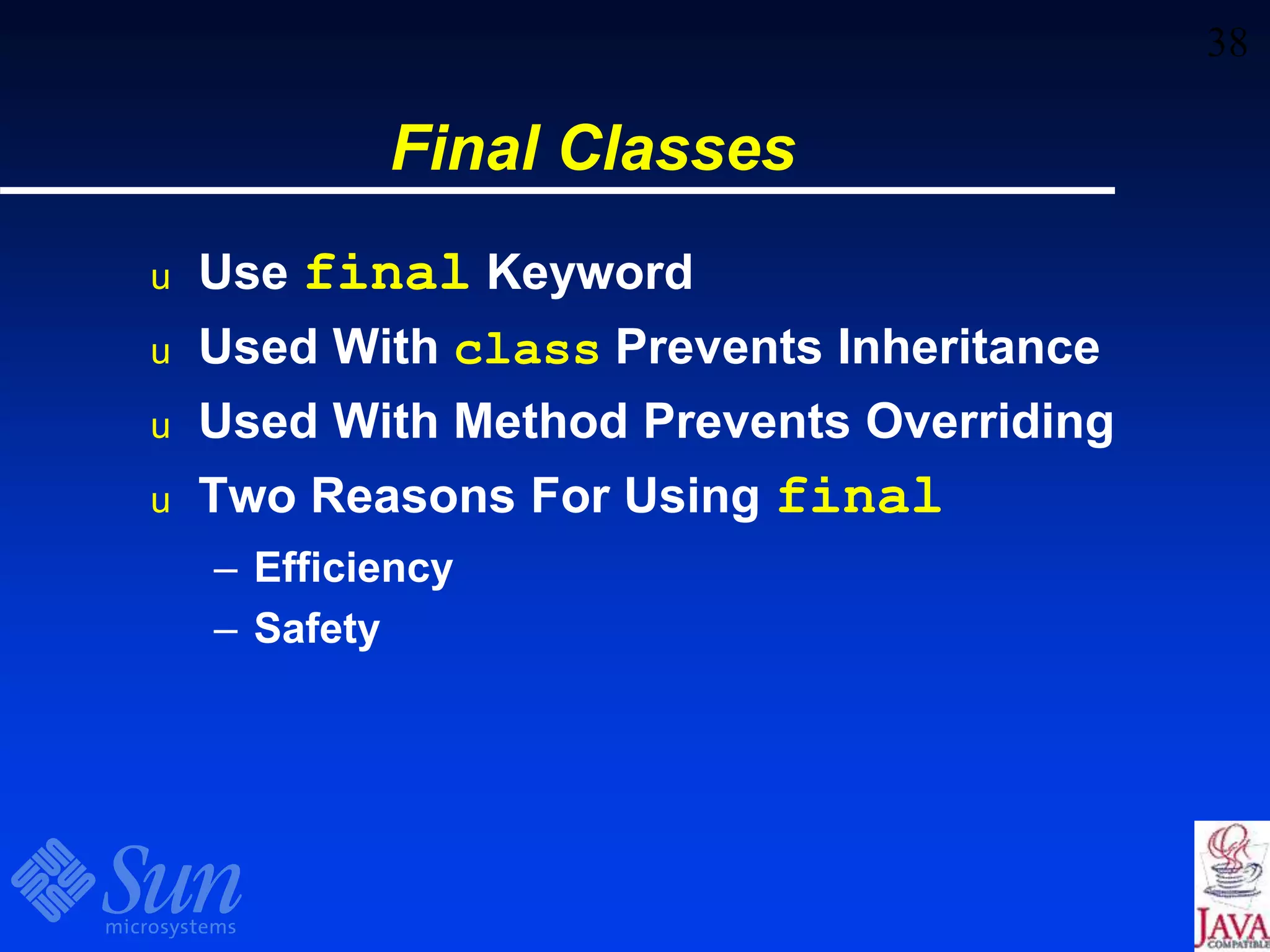
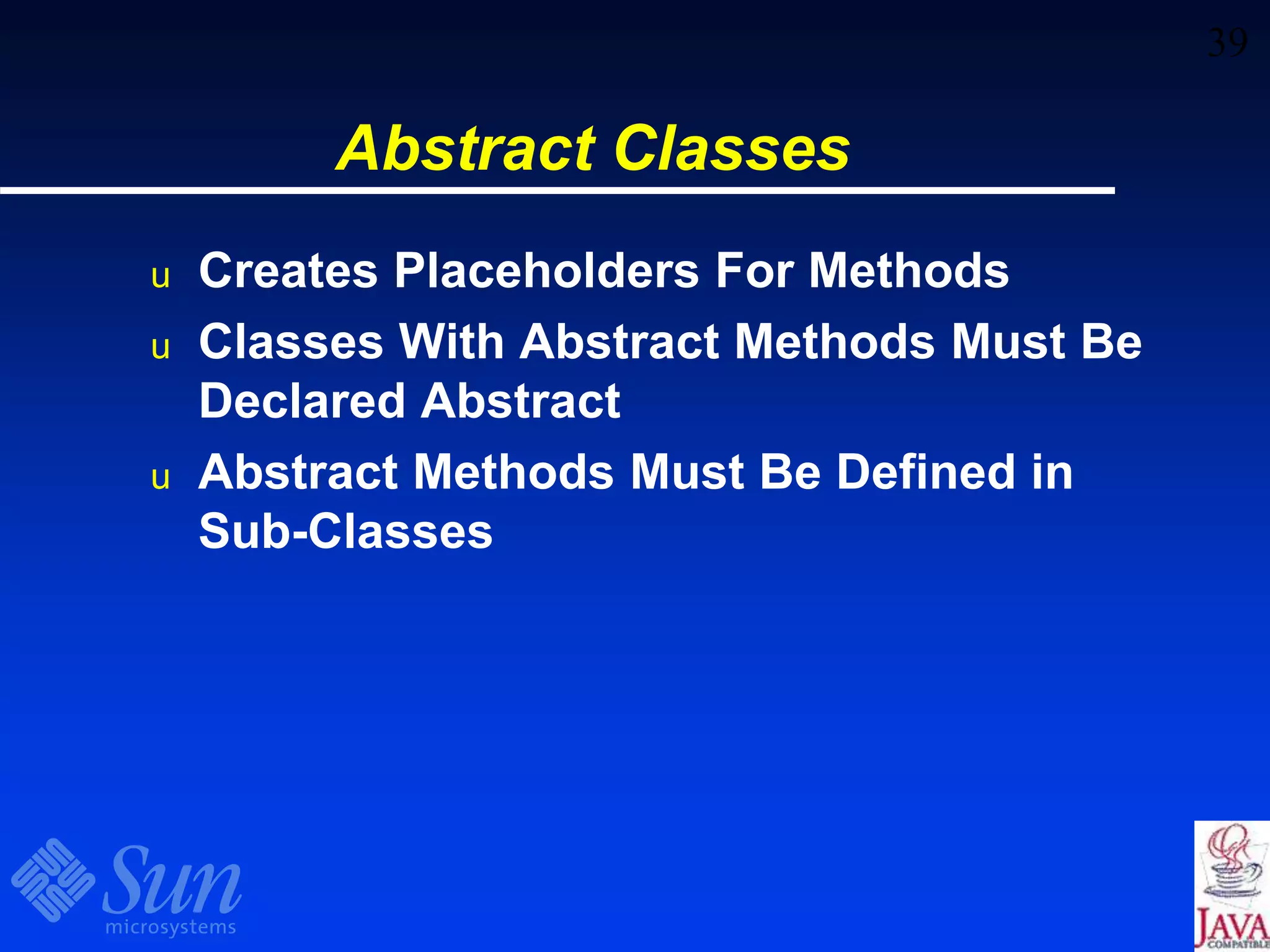
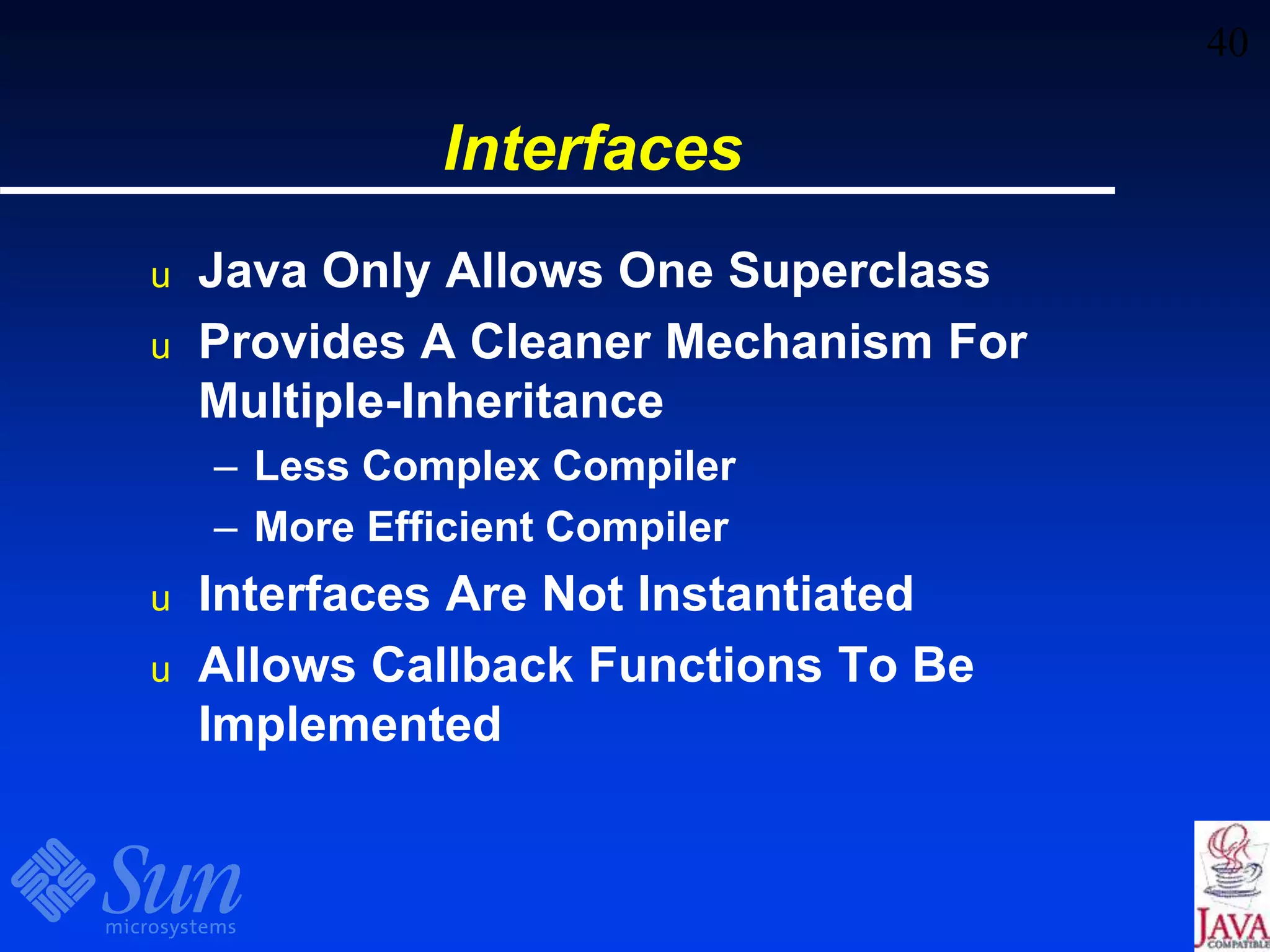
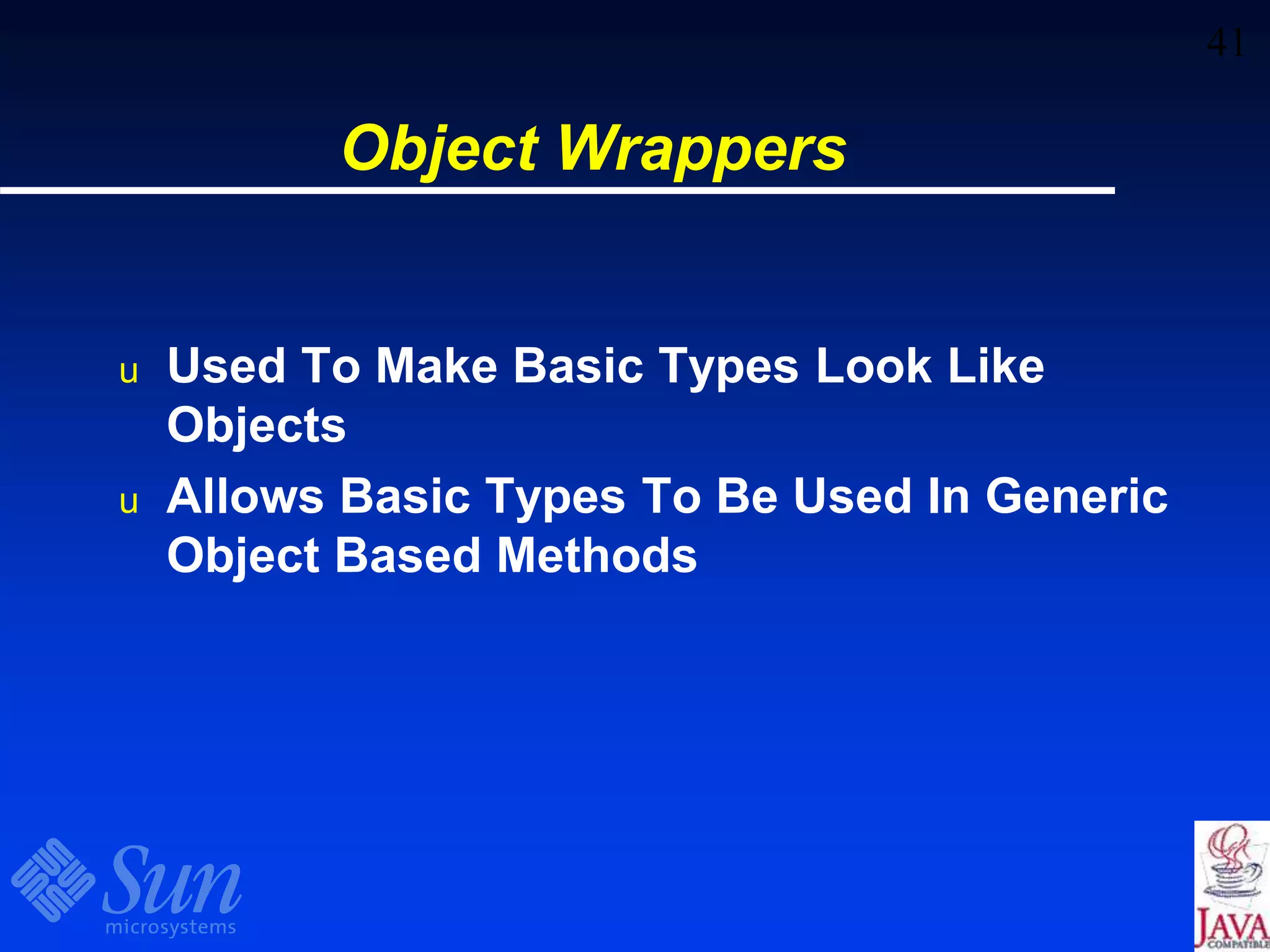
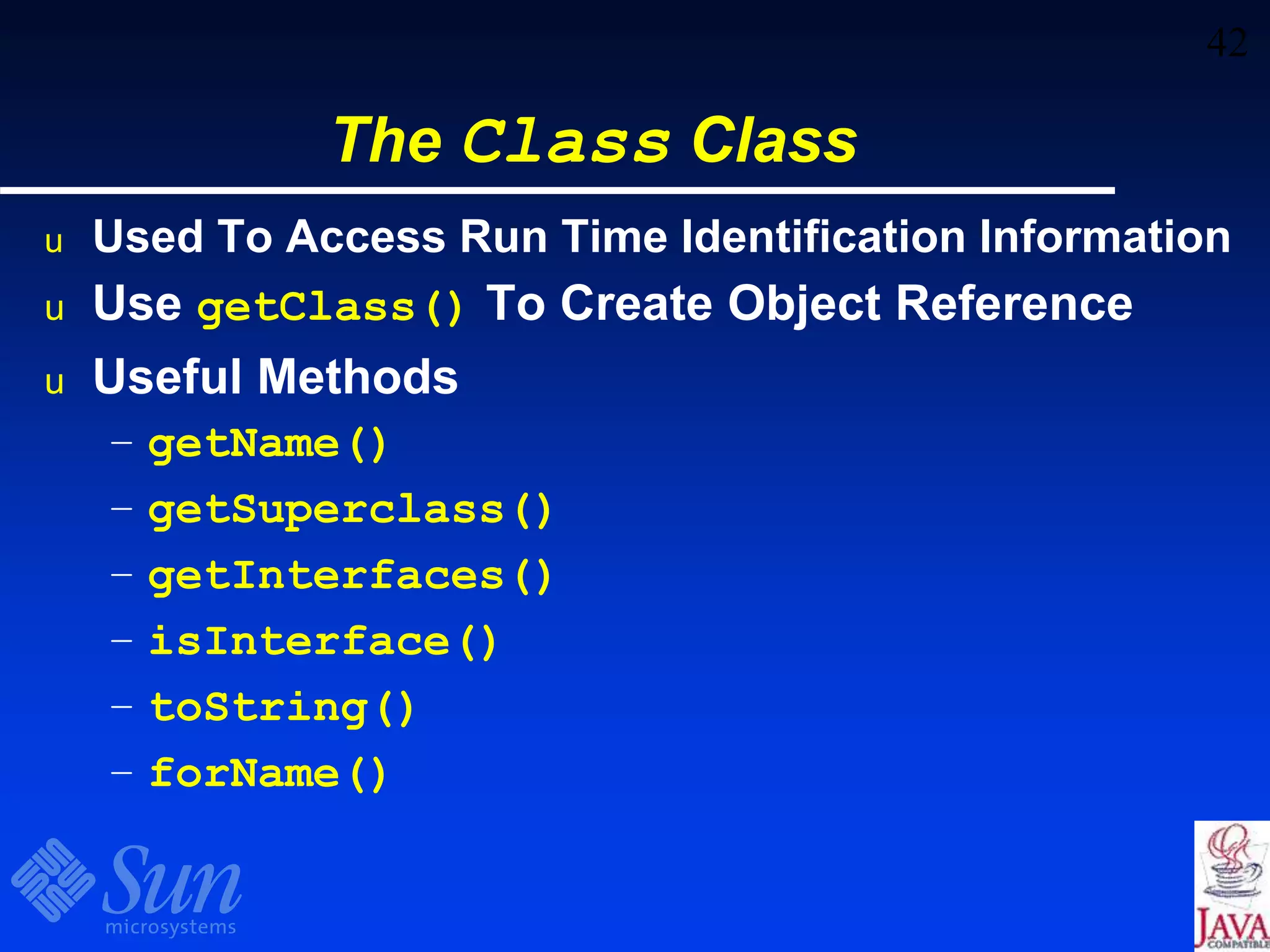
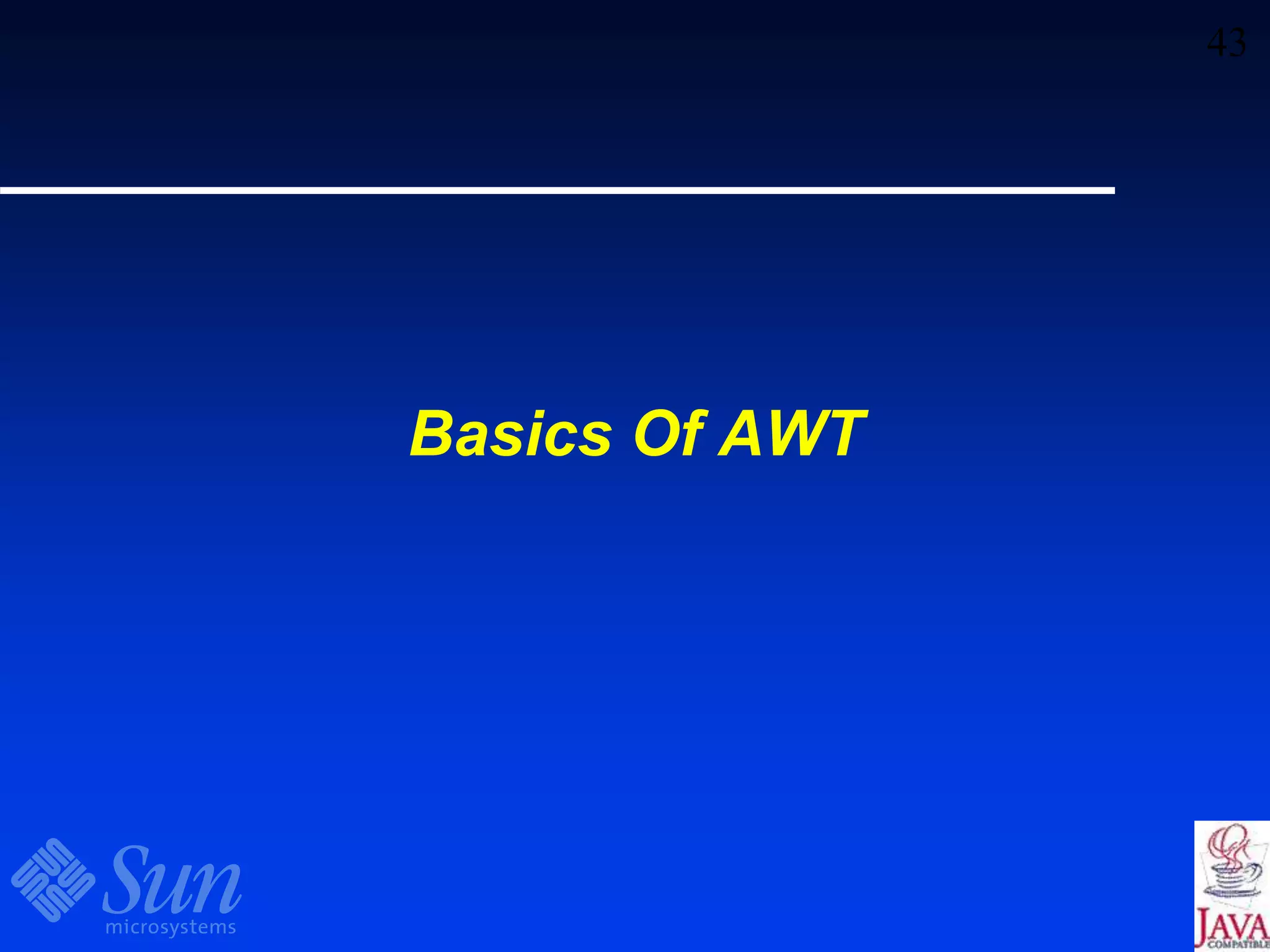
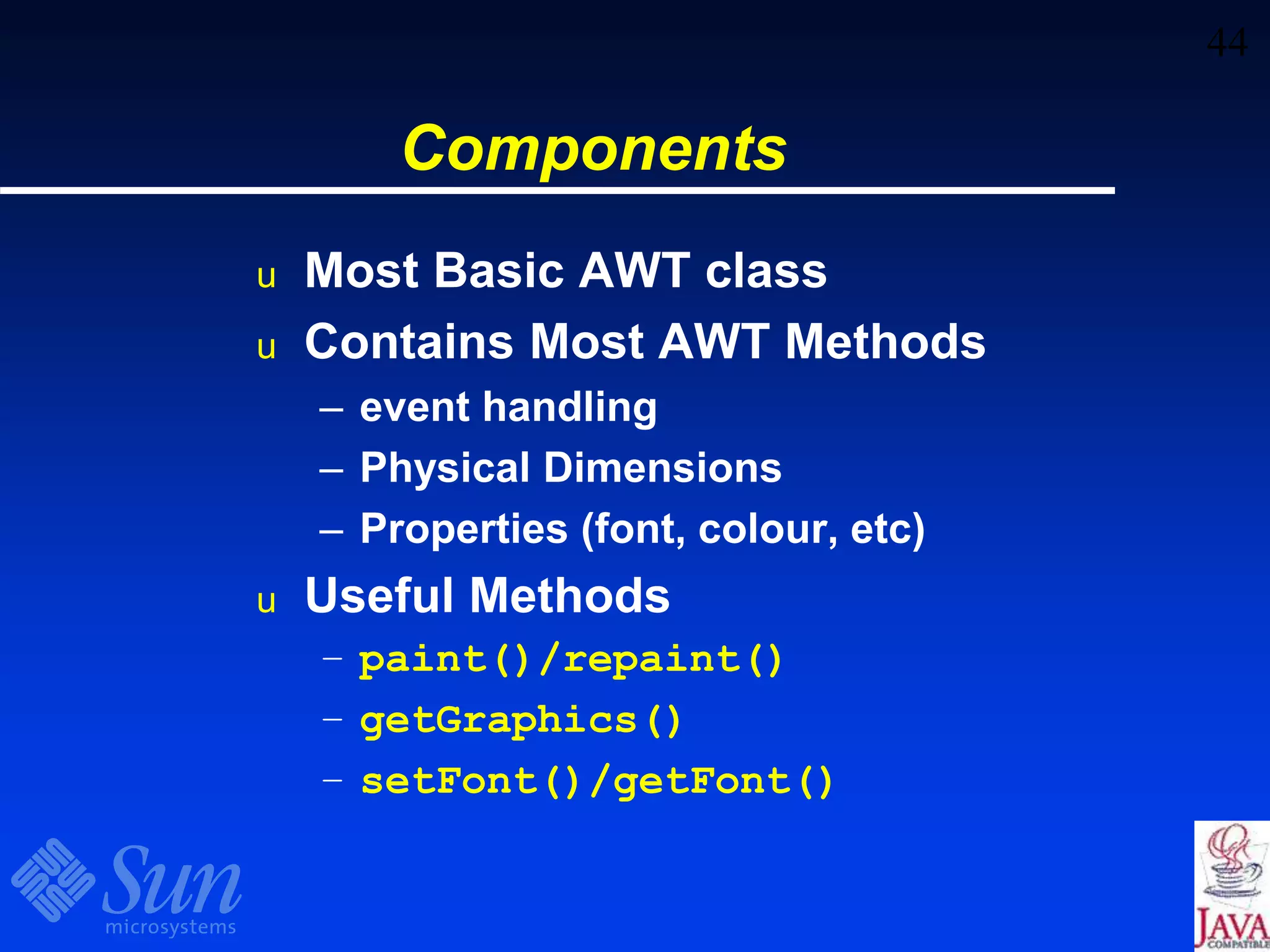
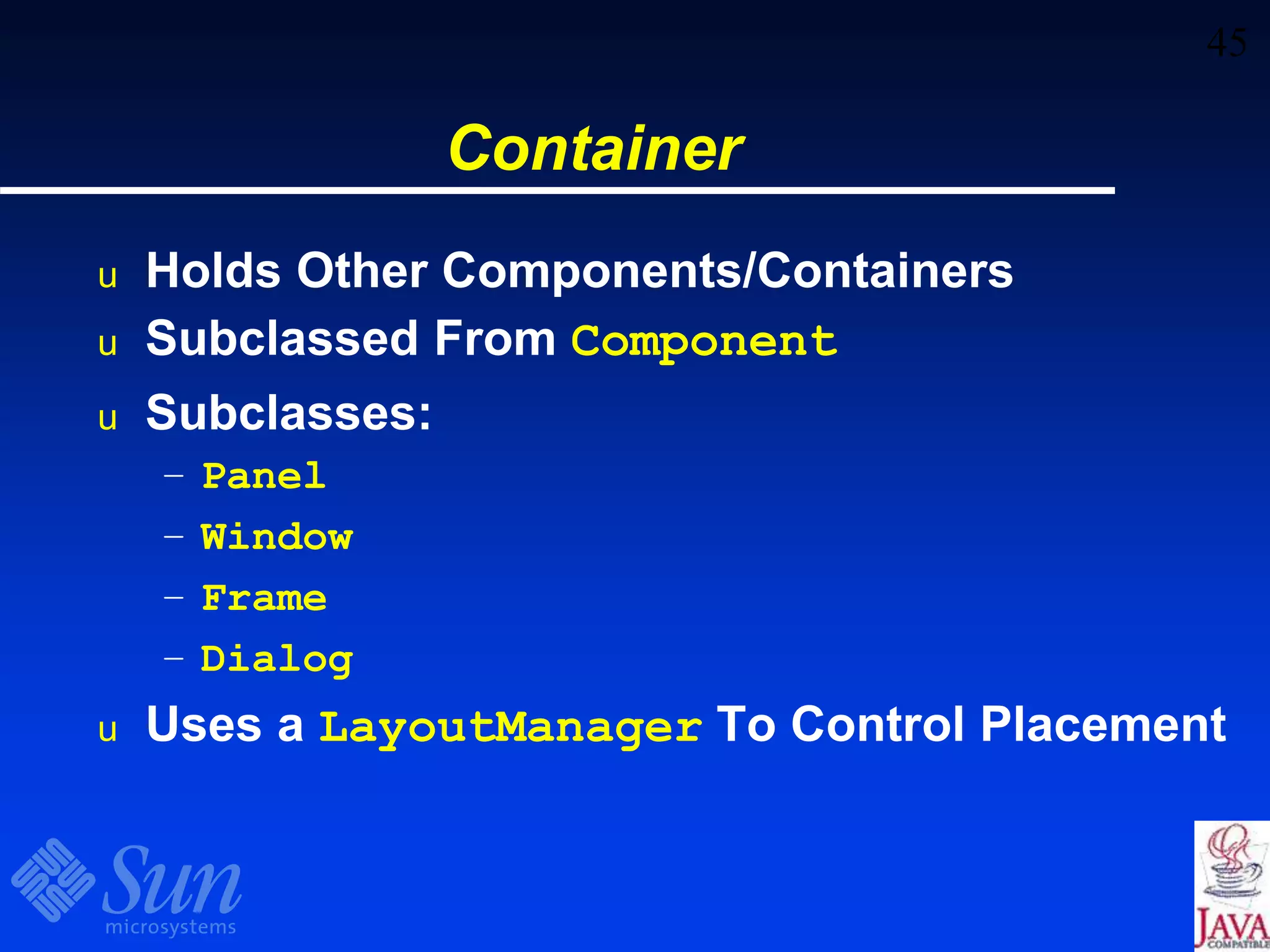
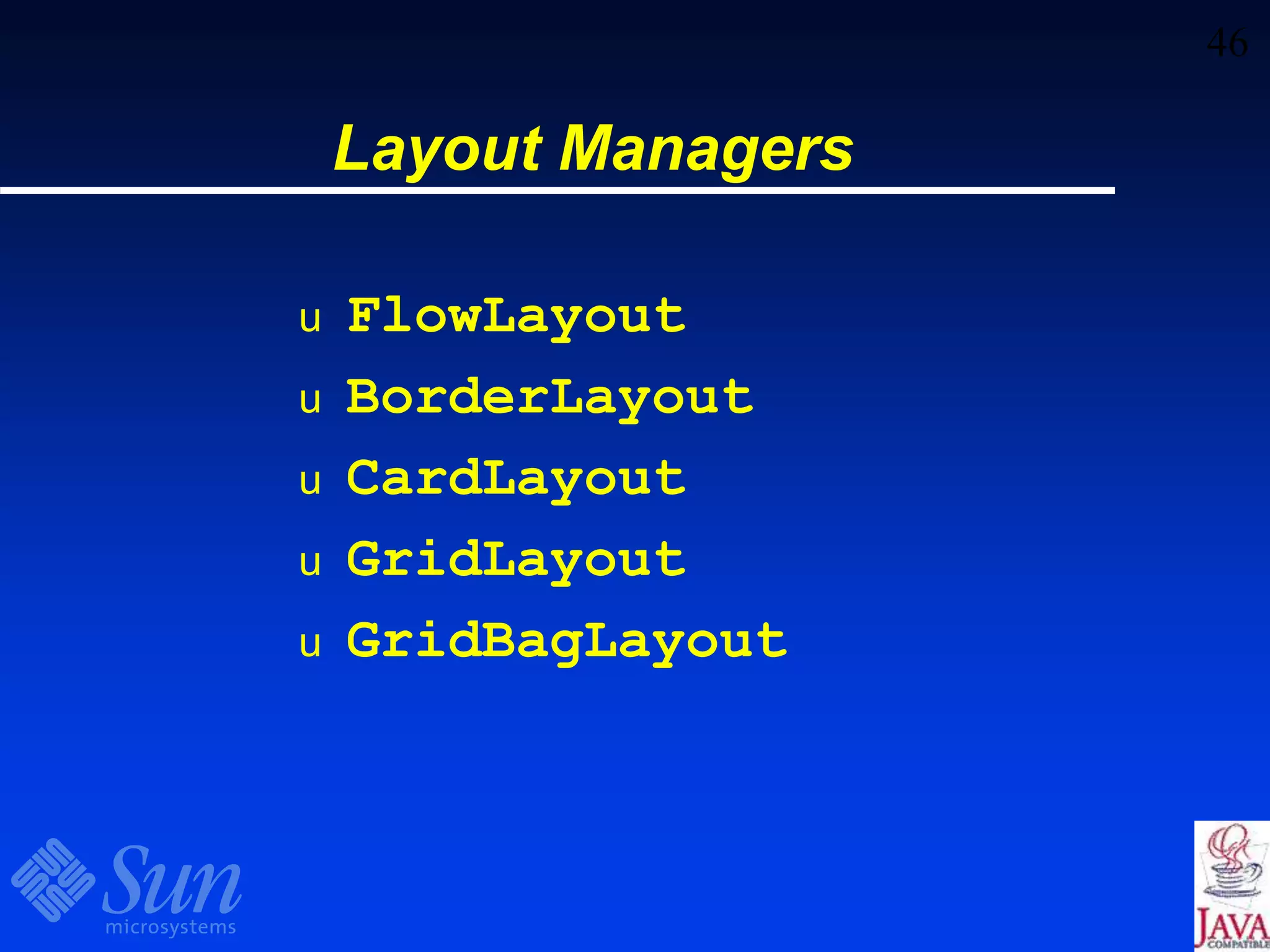
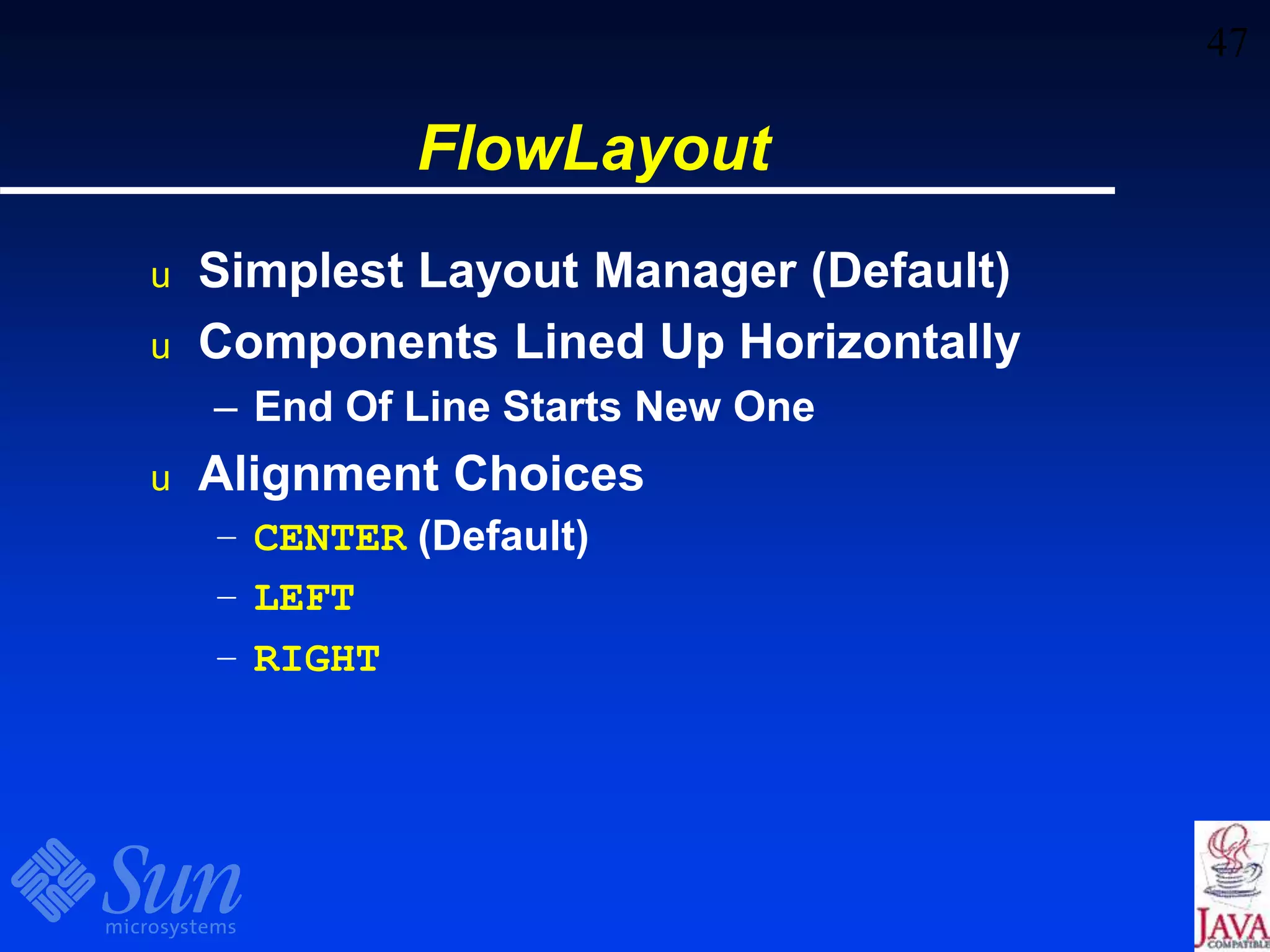
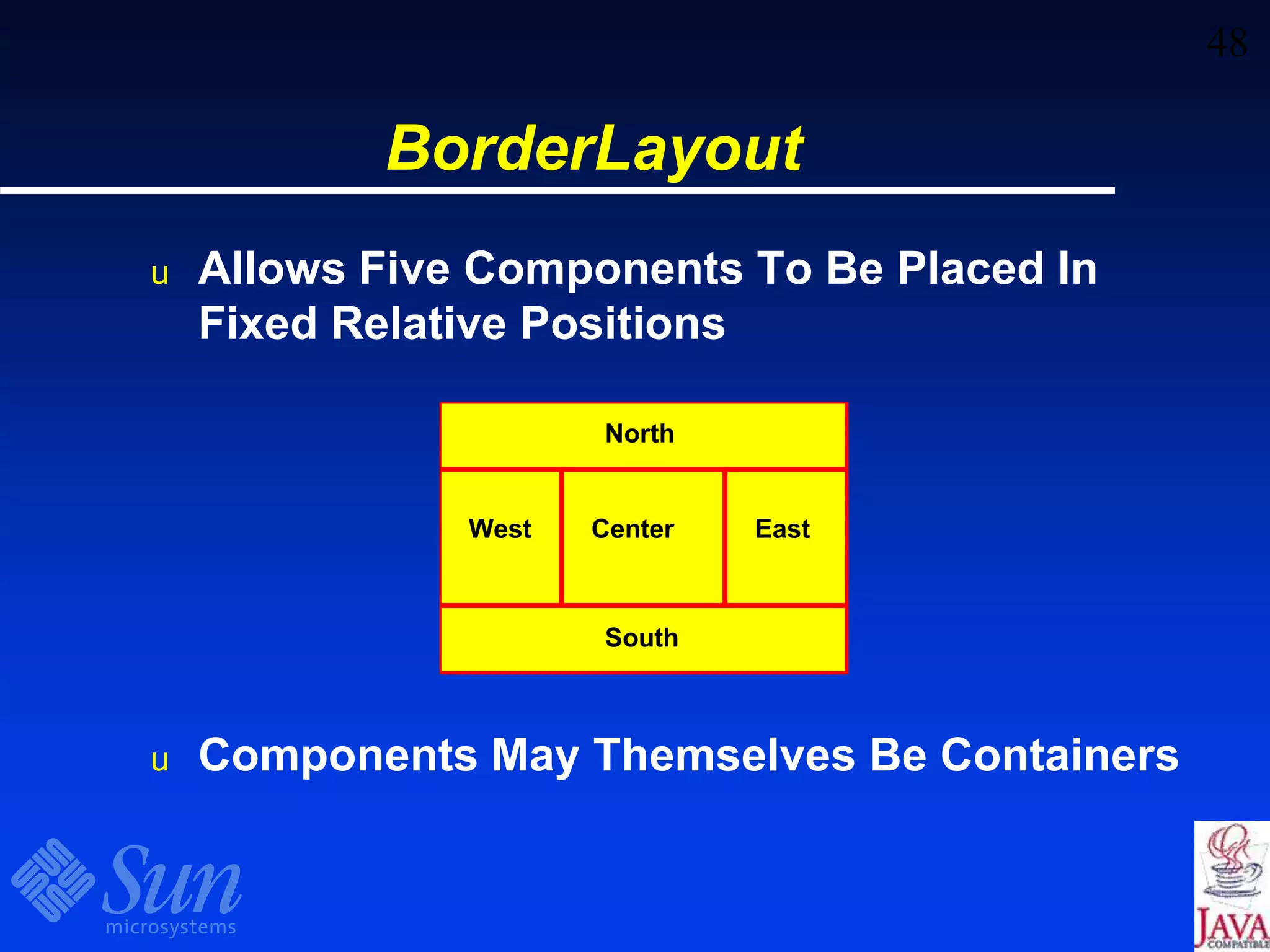
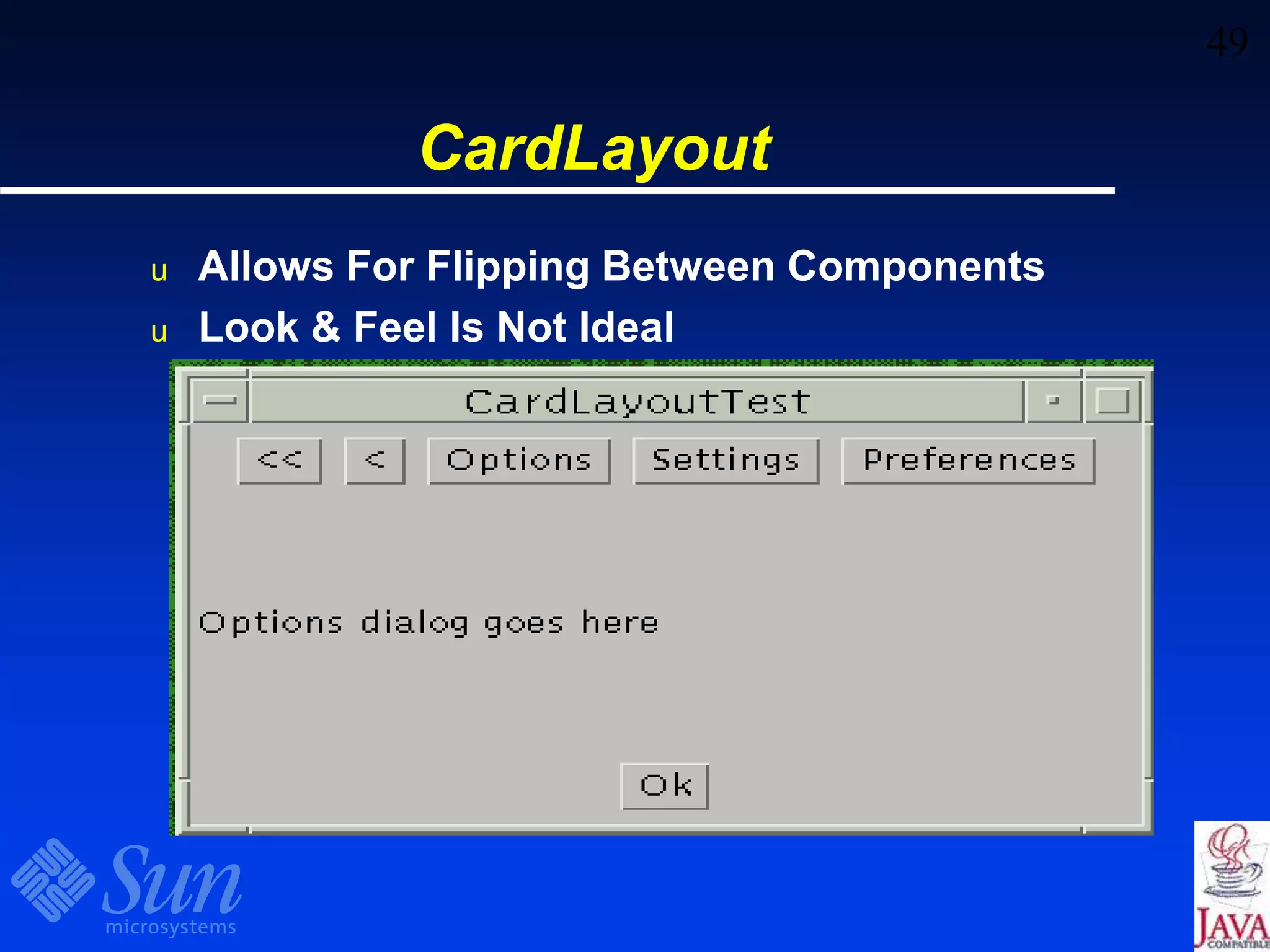
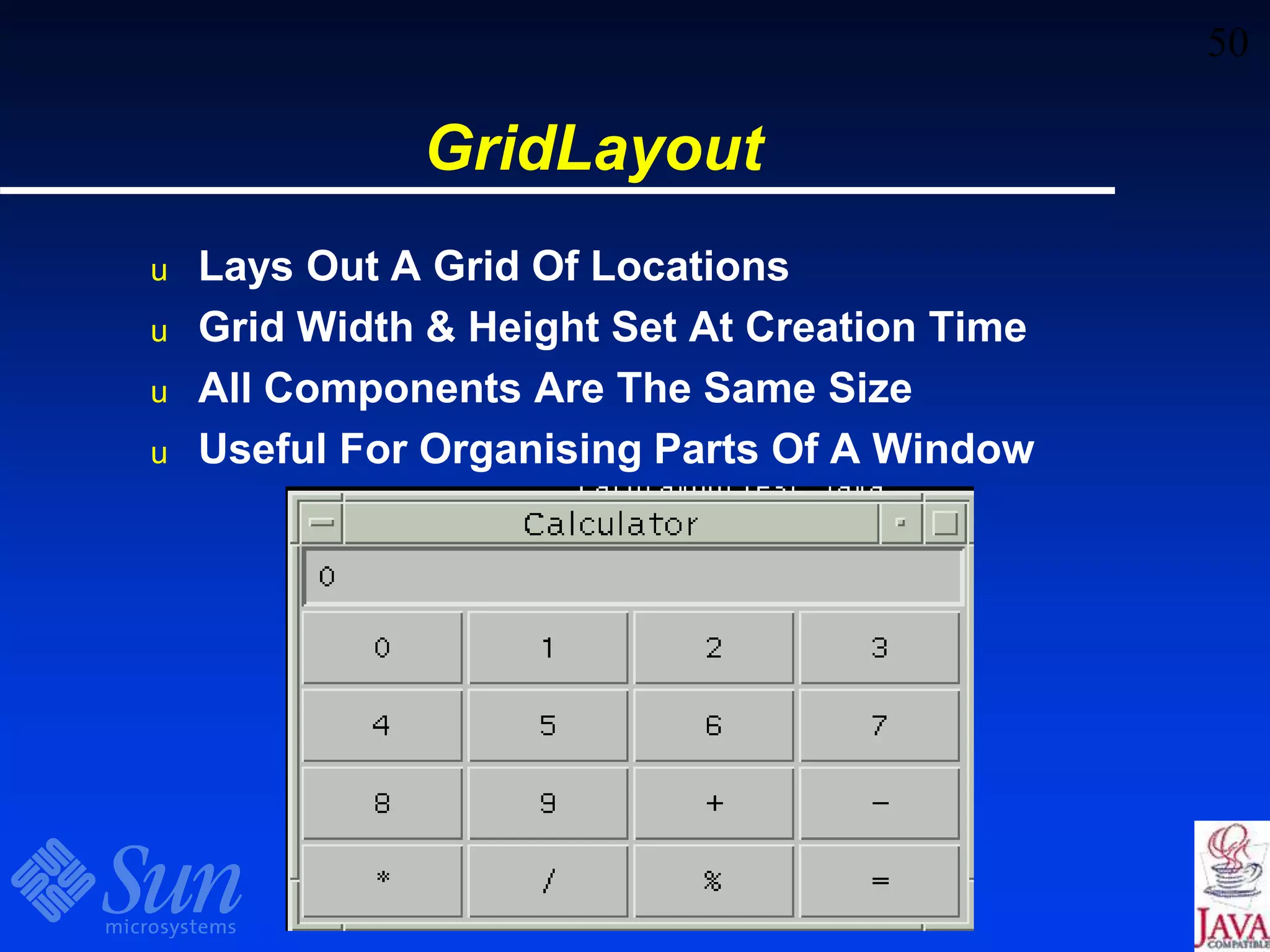
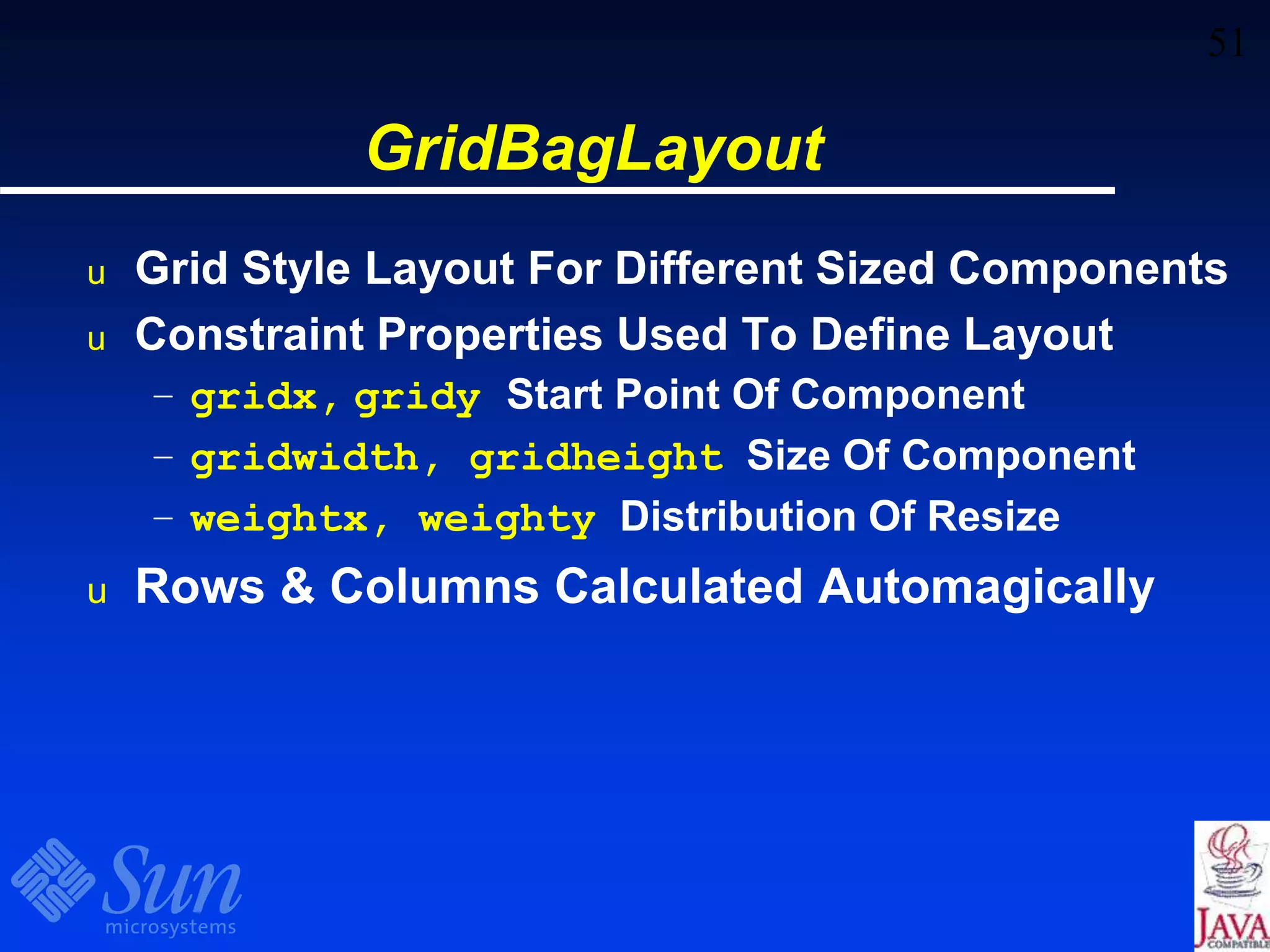
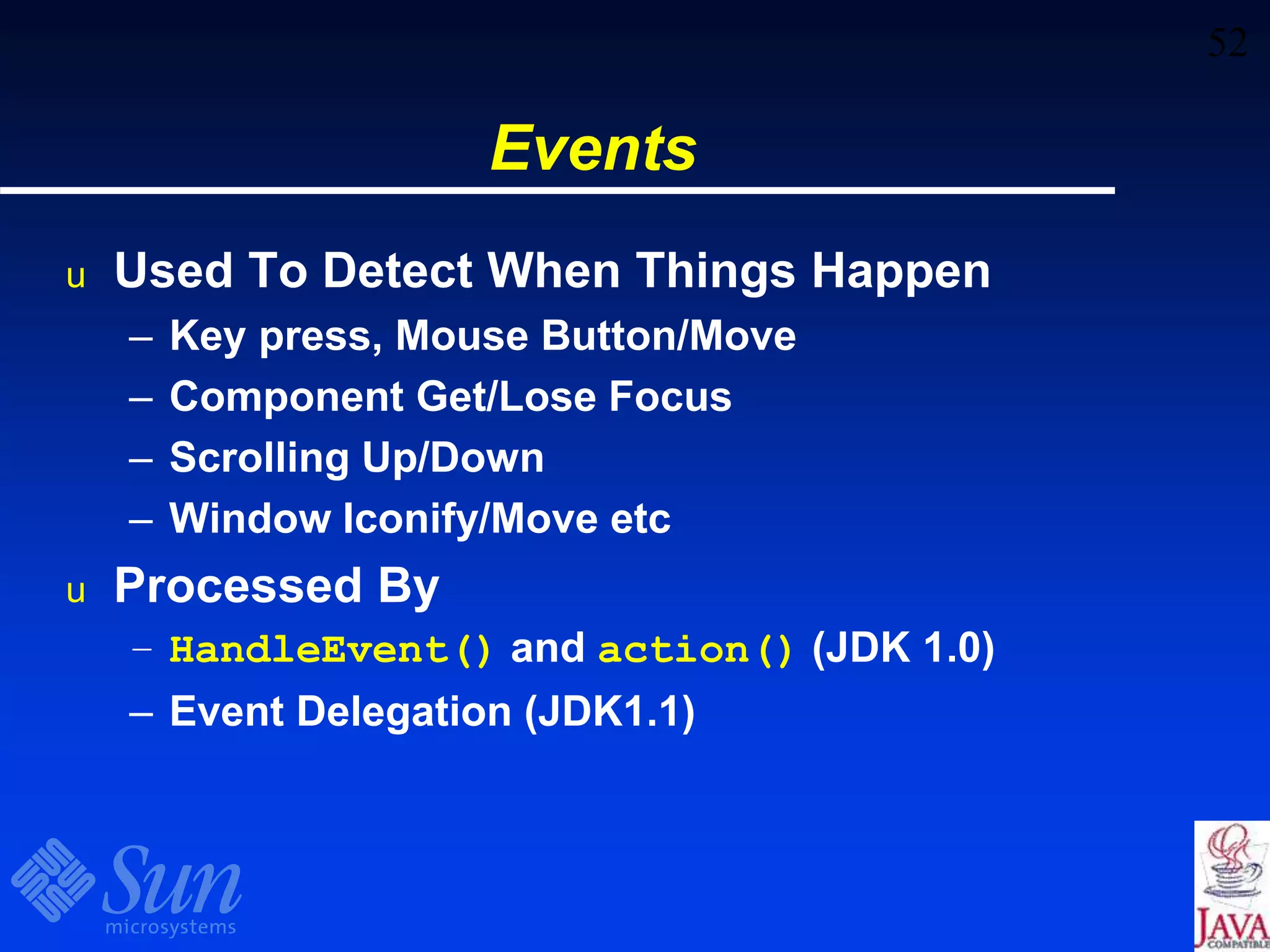
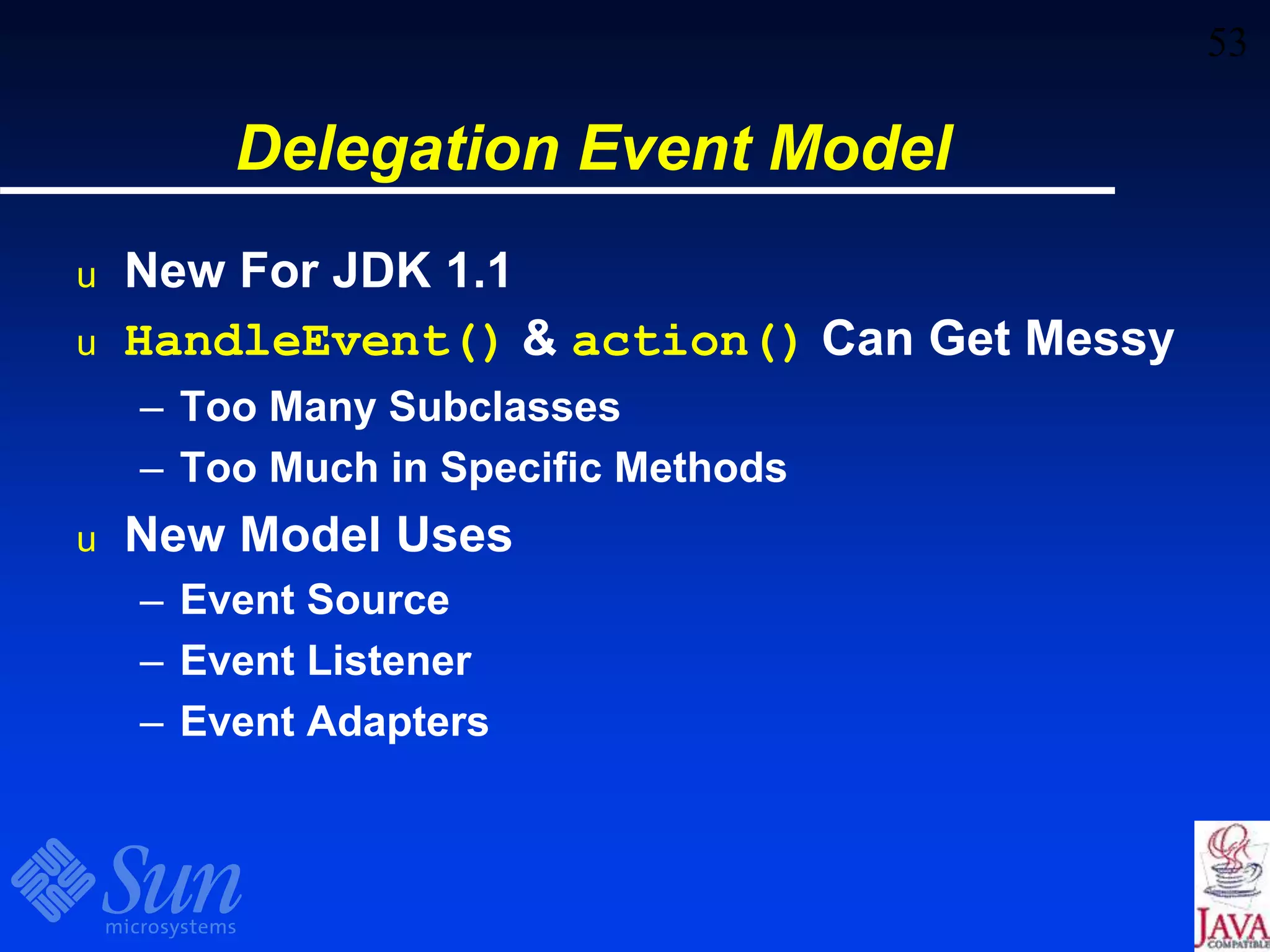
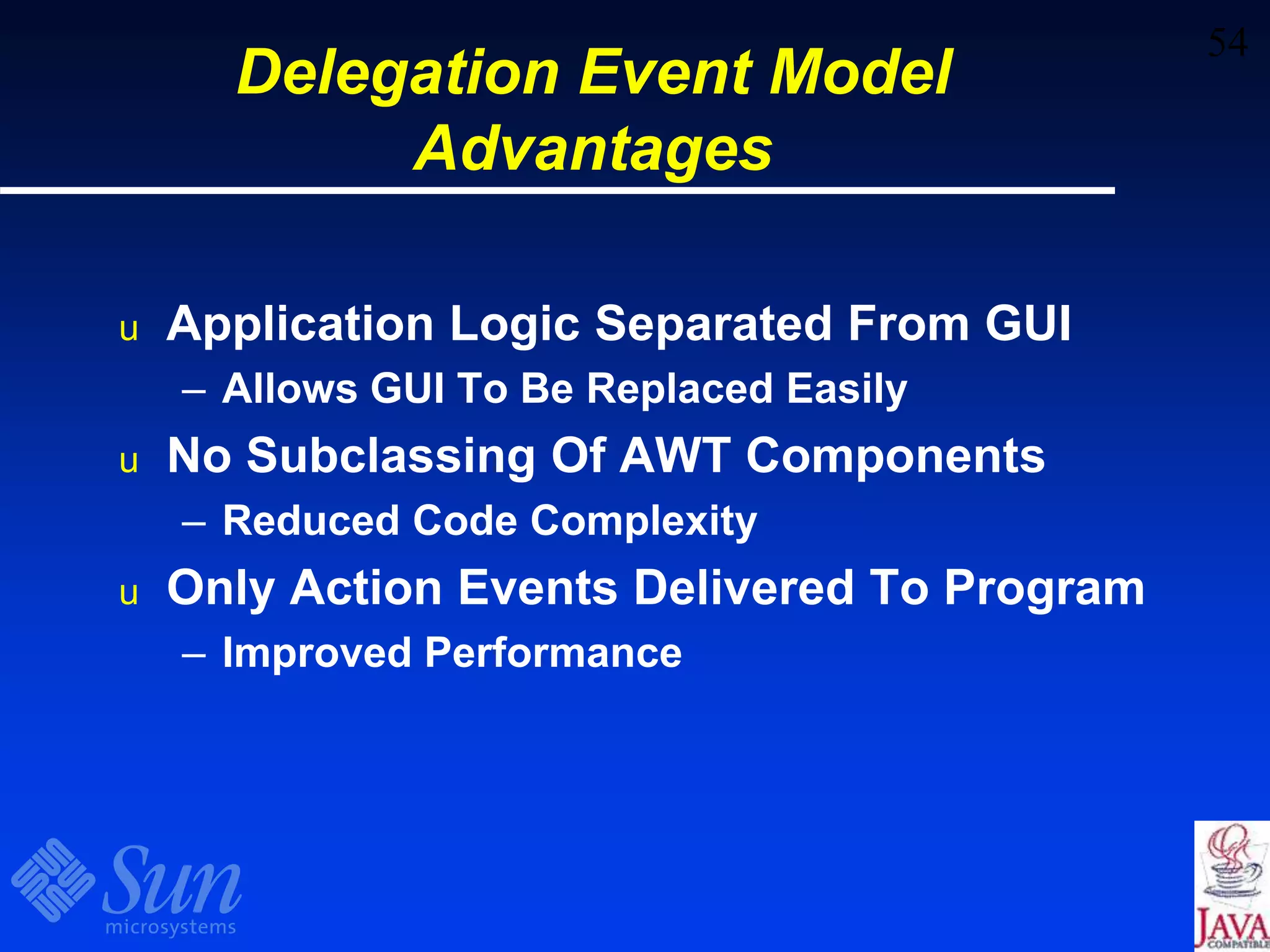
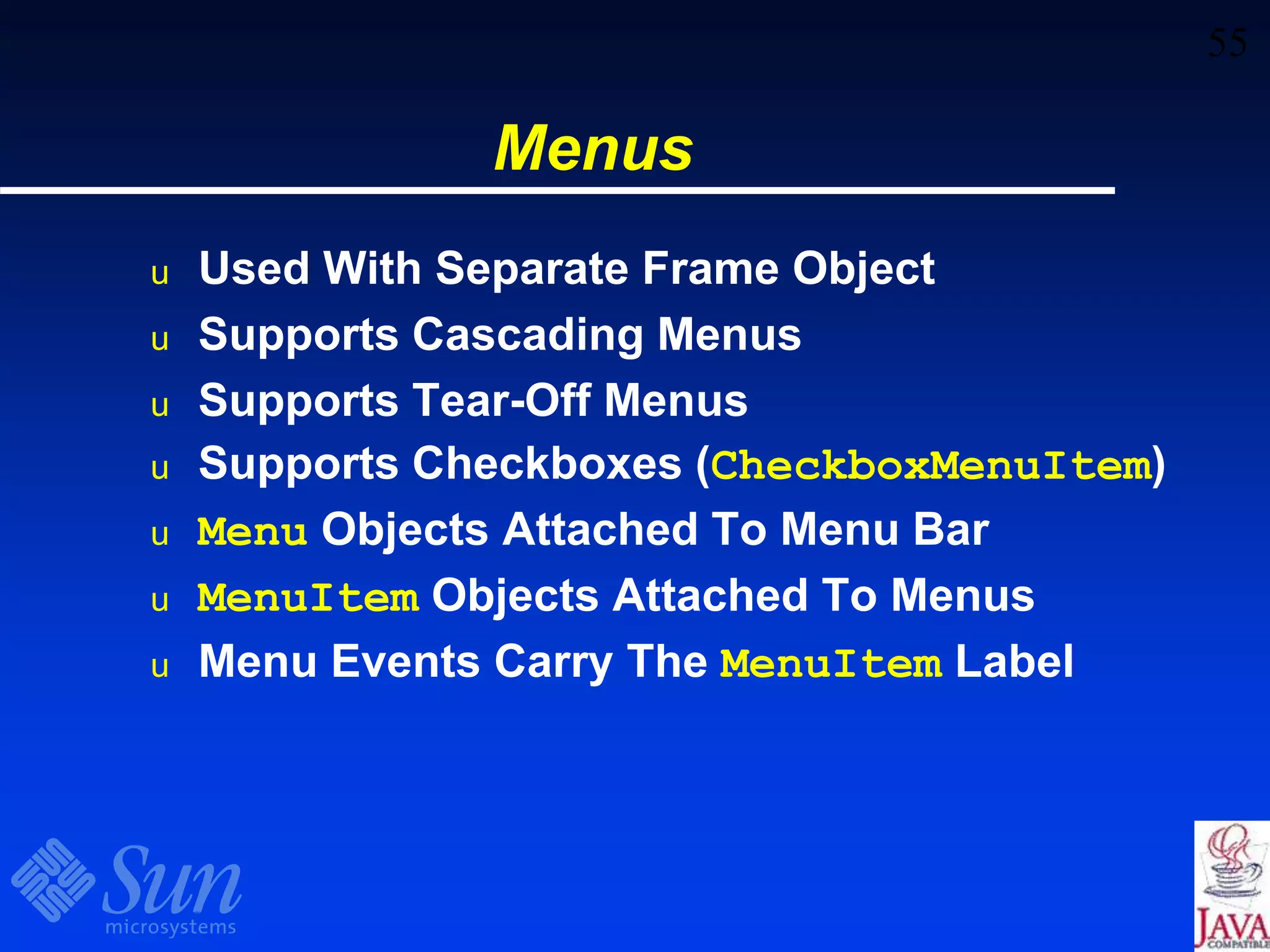
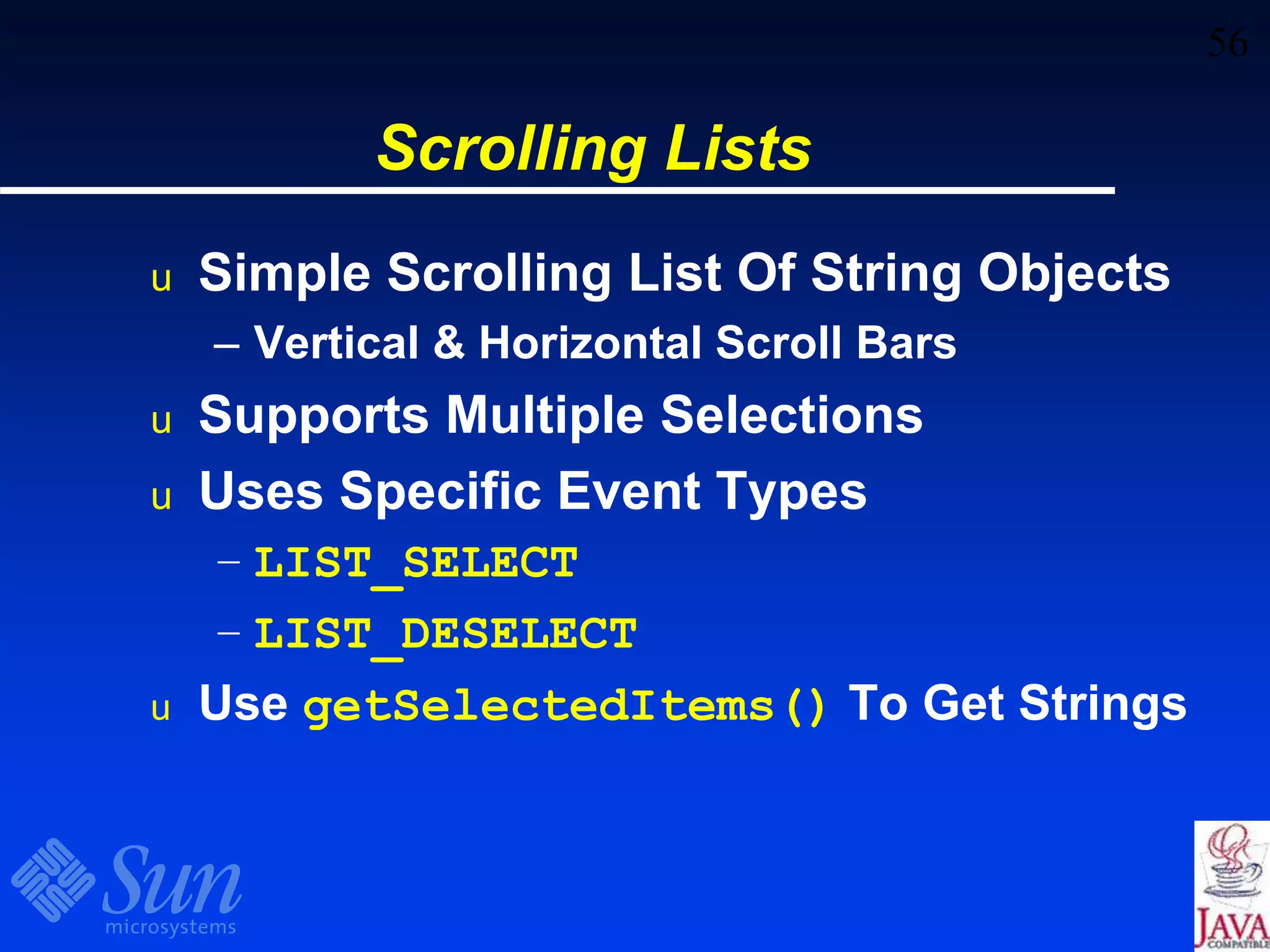

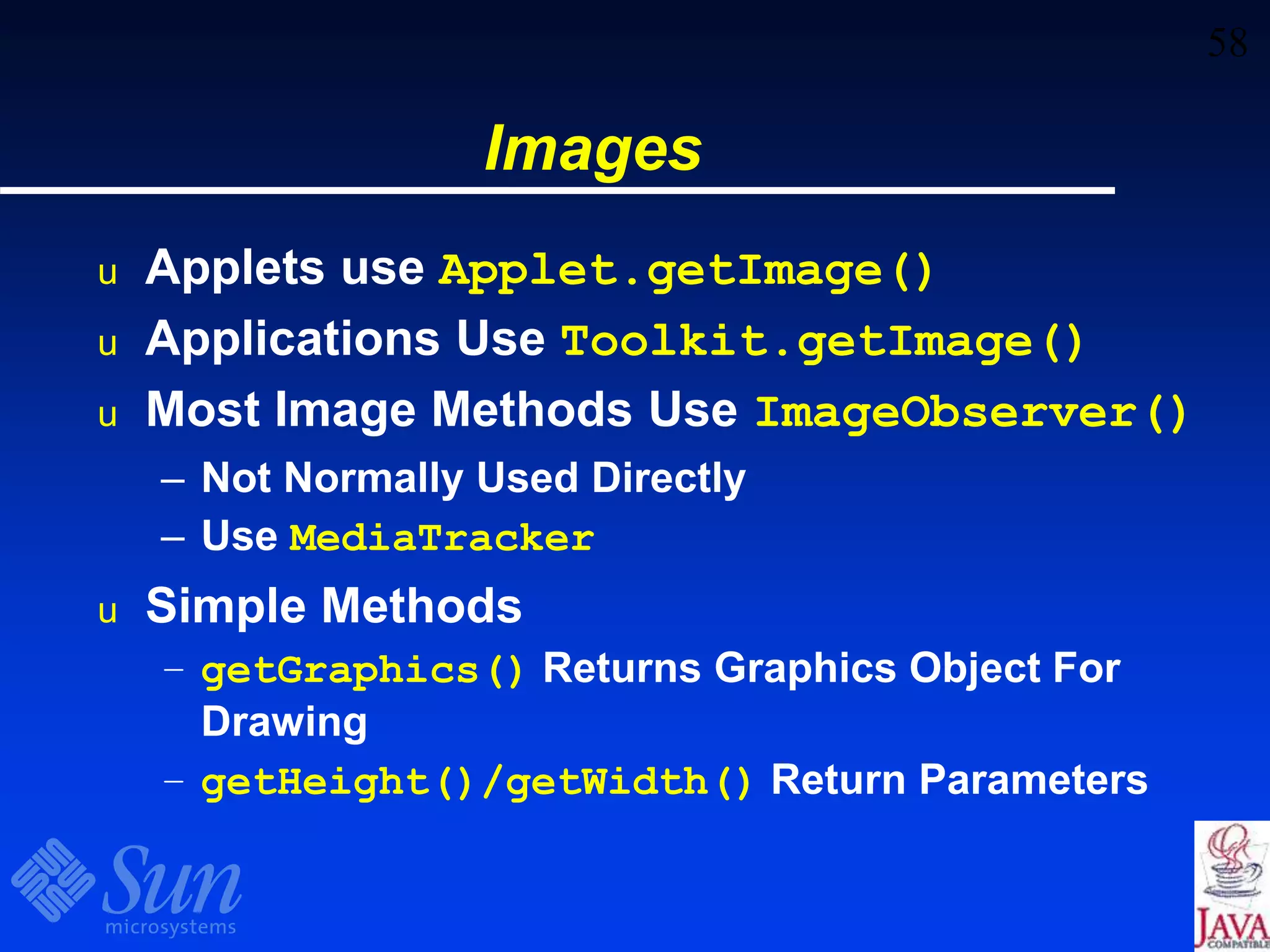
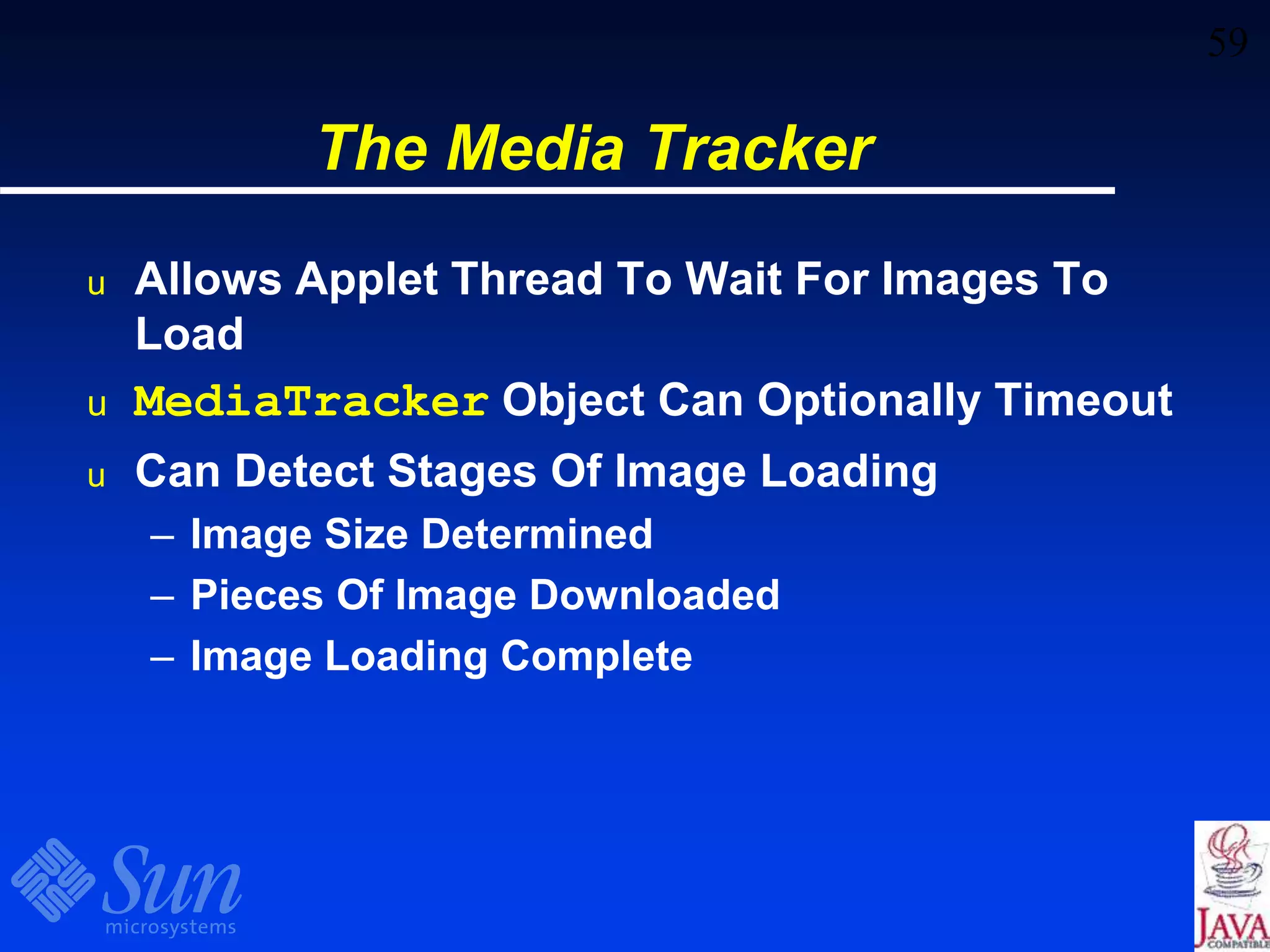
![60
Animation
u Very Simple In Java
u Download Sequence Of Images Into Array
img[j] = getImage(“images/T1.gif”);
u Loop Through Array Calling Paint() With
Appropiate Image
public void paint(Graphics g)
{
g.drawImage(img[j], x, y, this);
}](https://image.slidesharecdn.com/lotus-bp-2-190520145156/75/Java-Programming-60-2048.jpg)
